CREATING VALUE –SUSTAINABLE APPROACHES FOR THE MEDICAL DEVICE INDUSTRY
SUSTAINABILITY IN DRUG DELIVERY
FROM VISION TO VICTORY: BUILDING A HANDS-ON ESG FRAMEWORK

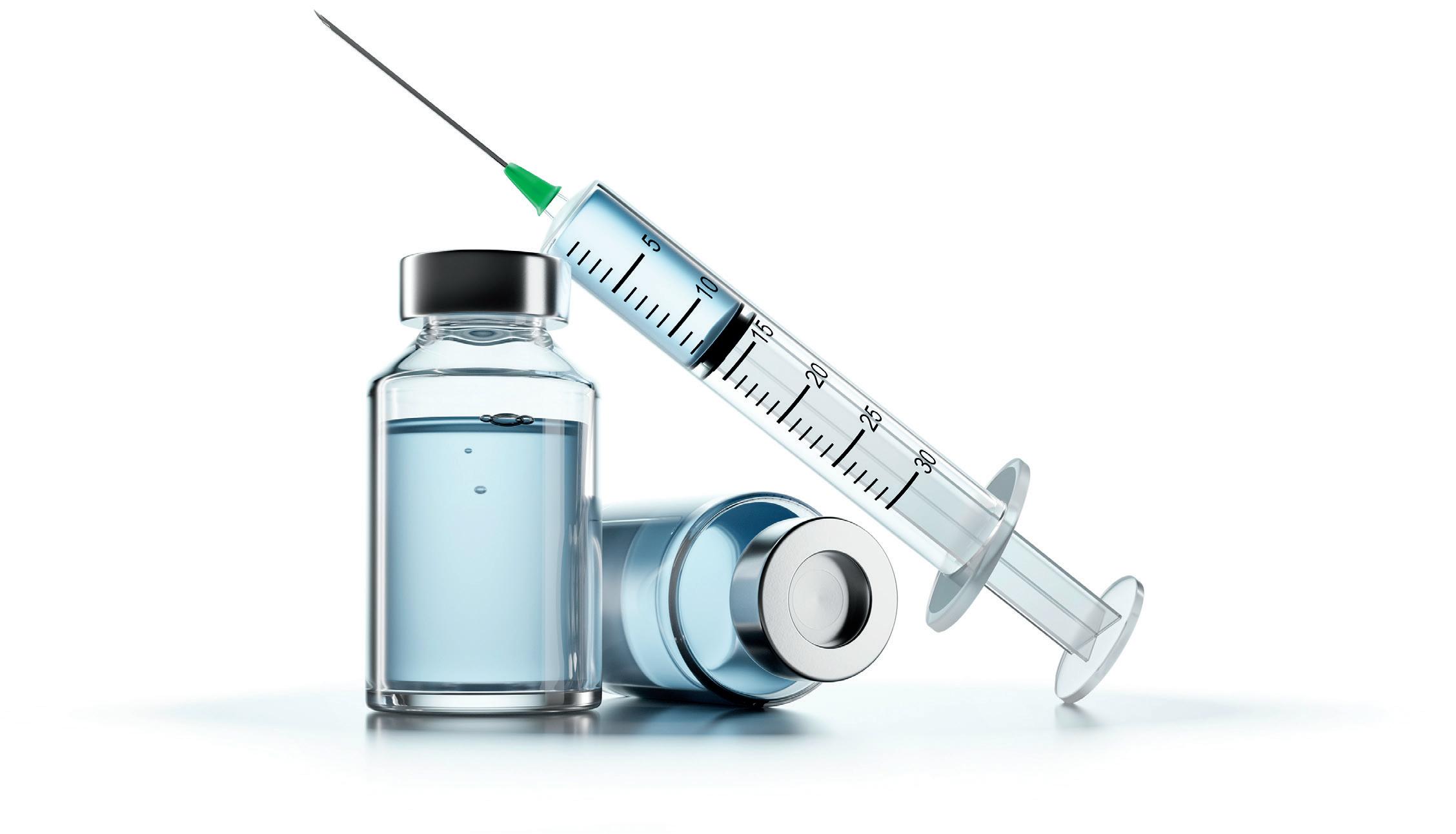
OUTSTANDING ISSUE SPONSOR





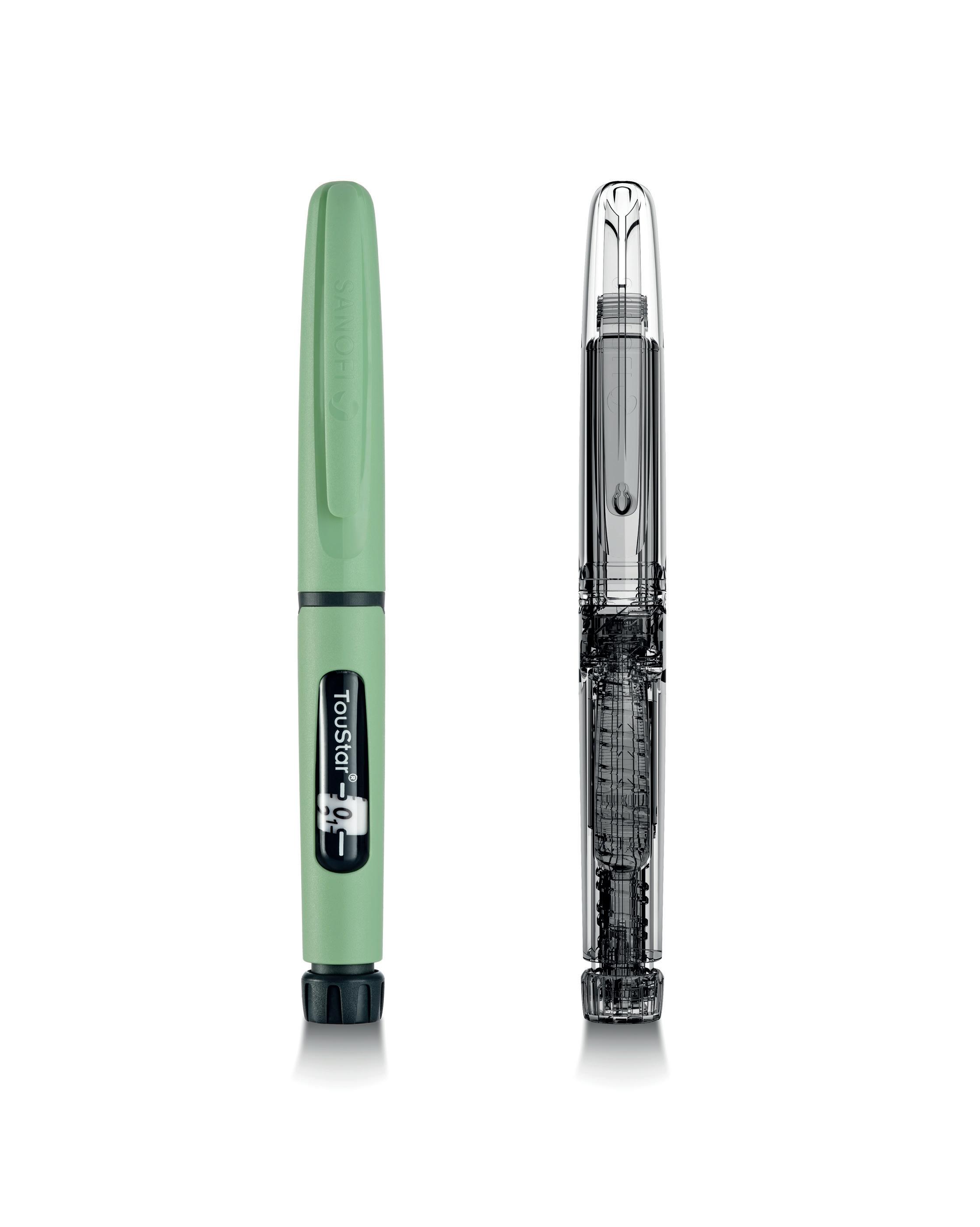
www.dca-design.com

Quali-V® TiO2-free capsules
Premium capsules designed for pharmaceutical formulations, ensuring safety and efficacy.
Experience the epitome of reliability and effectiveness with Quali-V® TiO2-free capsules, meticulously crafted to uphold the highest standards of safety, quality, and effectiveness. Enjoy outstanding visual appeal and performance, while benefiting from the same exceptional properties as traditional capsules.
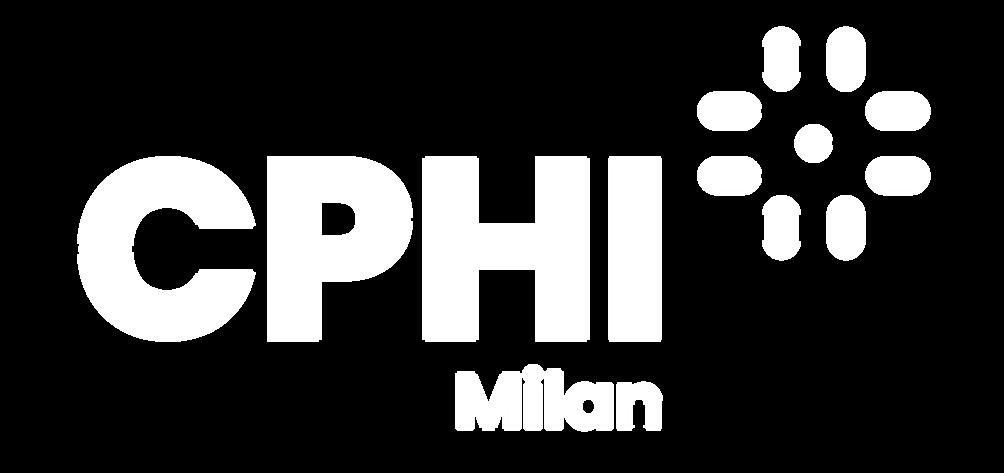
8-10 October 2024
Fira Milano, Italy
Connect at CPHI Milan and watch your business grow!
Join us to network with the innovators, experts and thought leaders reshaping our industry. This year will be our 35th edition of uniting pharma excellence and it’s going to be busy! To celebrate this milestone, we’ve planned a lot of exciting features to enhance pharma’s largest gathering and make your experience even more rewarding. Features like our Happy Hour Networking events, our CPHI Champions Campaign and a truly inspirational content agenda!



Penicillin, 1928
| ˌp ɛ n ɪ ˈs ɪ l ɪ n |
Alexander Fleming discovered penicillin, the first antibiotic, leading to a revolution in the treatment of bacterial infections.
Alexander Fleming


35 years of innovation and collaboration

Celebrate 35 years of CPHI events with us this October 8-10. We are highlighting 25 innovations that have transformed not only the pharma industry but the entire world. Find out more about thought leaders like Alexander Fleming, the pioneer in developing antibiotics, attend our CPHI Celebration party to toast success as this year’s awards are announced and continue networking with the winners and their teams at the heart of pharma.

ONdrugDelivery Issue No 165, September 24th, 2024
SUSTAINABILITY IN DRUG DELIVERY
This edition is one in the ONdrugDelivery series of publications. Each issue focuses on a specific topic within the field of drug delivery, and is supported by industry leaders in that field.
EDITORIAL CALENDAR 2024/25
Oct 2024 Prefilled Syringes & Injection Devices
Nov Pulmonary & Nasal Drug Delivery
Dec Connectivity in Drug Delivery
Jan 2025 Prefilled Syringes & Injection Devices
Feb Skin Drug Delivery:
Dermal, Transdermal & Microneedles
Mar Ophthalmic Drug Delivery
Apr Pulmonary & Nasal Drug Delivery
Apr/May Sustainability in Drug Delivery
May Injectable Drug Delivery: Formulations & Devices
May/Jun Oral Drug Delivery
Jun Connectivity in Drug Delivery
Jun/Jul Industrialising Drug Delivery
Sep Wearable Injectors
Sep/Oct Sustainability in Drug Delivery
EDITORIAL:
James Arnold, Editor
E: james.arnold@ondrugdelivery.com
CREATIVE DESIGN:
Simon Smith, Head of Creative E: simon.smith@ondrugdelivery.com
SUBSCRIPTIONS:
Print + Digital subscription: £99/year + postage
Digital Only subscription: free. E: subscriptions@ondrugdelivery.com
ADVERTISING & SPONSORSHIP: Guy Furness, Publisher E: guy.furness@ondrugdelivery.com
ONdrugDelivery is published by Frederick Furness Publishing Ltd
The Candlemakers, West Street, Lewes East Sussex, BN7 2NZ, United Kingdom T: +44 1273 47 28 28
Registered in England: Company No 8348388 ISSN 2049-145X print / ISSN 2049-1468 pdf
Copyright © 2024 Frederick Furness Publishing Ltd

ONdrugDelivery Magazine is printed sustainably by Newman Thomson Ltd, West Sussex, UK, using Forest Stewardship Council® certified recycled paper, vegetable-based inks, biodegradable laminates and carbon balanced materials offset via the World Land Trust™ following ISO140001 processes. ONdrugDelivery in print is sustainably shipped to events by DHL using GoGreen Plus whereby carbon insetting of at least 30% is achieved through the use of Sustainable Aviation Fuel (SAF), a biofuel substitute for traditional jet fuel, produced from renewable sources such as vegetable oils, animal fats, waste products, and agricultural crops. The magazine is mailed to individual readers outside the UK by DHL using GoGreen, which offsets 100% of CO2 emissions.
The ONdrugDelivery logo is a registered trademark of Frederick Furness Publishing Ltd.
The views and opinions expressed in this issue are those of the authors. Due care has been used in producing this publication, but the publisher makes no claim that it is free from error. Nor does the publisher accept liability for the consequences of any decision or action taken (or not taken) as a result of any information contained in this publication.
09 - 13
18 - 22
26 - 29
32 - 35
38 - 41
44 - 48
50 - 53
56 - 58
60 - 62
Pioneering Pharmaceutical Packaging: A Push for Decarbonisation and Circularity
Philipp Ludihuser, Sustainability Manager; and Arne Kloke, Head of Service and Sustainability Management
SCHOTT Pharma
Opportunity Through Innovation –Environmental and Social Sustainability in Injection Devices
John Merhige, Chief Commercial Officer; and Dan Thayer, Communications/IR Director
Credence MedSystems
Interview
Glenn Svedberg, Group Sustainability & Technical Director
Nolato Group
Creating Value – Sustainable Approaches for the Medical Device Industry
David Pircher, Head of Business Development
BAUMANN Medical
Sustainable Design for Healthcare Devices: Pathways Towards Net Zero
Will Davies, Design Consultant; and Holly Milston, Business Development Manager
Shore
Prioritising Sustainability in Pharma
Jessica Buday, Product Line Manager
Corning in partnership with West Pharmaceutical Services
From Vision to Victory: Building a Hands-on ESG Framework
Herman Rusch, Chief Executive Officer; and Steven van Voorst, QHSE Manager
IGS GeboJagema
Interview
Louise Righton, Head of Strategic Marketing; and Benedicta Bakpa, Head of ESG
Bespak
Conference Showcase: Dive into the Heart of Pharma CPHI Milan 2024





October 28 - 29, 2024 • Westin Boston
October 28 - 29, 2024 • Westin Boston Seaport, Boston, MA
Featured Speakers
Featured Speakers
Featured Speakers
Featured Speakers

Laura
Laura
Laura

Robert




•
•




Program Features
Program Features
Program Features
Program Features
Program Features
Attendees
• 750+ Attendees from Pharma, Biotech, Drug Delivery, Academia, Investors and More
• 750+ Attendees from Pharma, Biotech, Drug Delivery, Academia, Investors and More
• 750+ Attendees from Pharma, Biotech, Drug Delivery, Academia, Investors and More
• Pharma Companies Address Drug Delivery Needs and Partnering Philosophies
• Pharma Companies Address Drug Delivery Needs and Partnering Philosophies
• Pharma Companies Address Drug Delivery Needs and Partnering Philosophies
• Partnering Opportunities including One-on-One Scheduled Meetings to Help Foster New Collaborations Aly
• Pharma Companies Address Drug Delivery Needs and Partnering Philosophies
• Pharma Companies Address Drug Delivery Needs and Partnering Philosophies
• 10 Tracks Covering a Wide
• 10 Tracks Covering a Wide Range of Drug Delivery Technologies
• 10 Tracks Covering a Wide Range of Drug Delivery Technologies
• 10 Tracks Covering a Wide Range of Drug Delivery Technologies
• 10 Tracks Covering a Wide Range of Drug Delivery Technologies
•
• Partnering Opportunities including One-on-One
• Partnering Opportunities including One-on-One

Scheduled Meetings to Help Foster New Collaborations
• Partnering Opportunities including One-on-One Scheduled Meetings to Help Foster New Collaborations
Scheduled Meetings to Help Foster New Collaborations
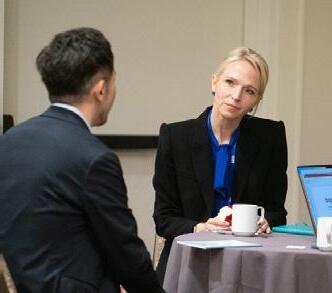

PIONEERING PHARMACEUTICAL PACKAGING: A PUSH FOR DECARBONISATION AND CIRCULARITY
In this article, Philipp Ludihuser, Sustainability Manager, and Arne Kloke, PhD, Head of Service and Sustainability Management, both at SCHOTT Pharma, highlight how the company’s collaboration with customers and partners in the pharmaceutical industry reduces the carbon emissions from the production of vials, cartridges, ampoules and syringes, as well as introduces circular solutions to increase resource efficiency.
The healthcare sector accounts for over 4% of global greenhouse gas (GHG) emissions. If the healthcare sector were a country, this volume of emissions would put it in fifth place in the global ranking.1 Another astonishing comparison: the pharmaceutical industry produced 48.55 tonnes of CO2 equivalents per million dollars of sales revenue in 2019, exceeding the automotive industry – commonly suspected of being the top emitter – by 55%. If the healthcare industry does not change its products, forecasts show that market growth would lead to a tripling of CO2 emissions by 2050.2
The good news is that the pharmaceutical industry has recognised the scale of the issue. Reducing carbon emissions, as well as avoiding waste and using resources more sustainably, are on the agenda of larger pharmaceutical companies.3 One important issue is primary pharmaceutical packaging – the container that is in direct contact with a drug. These containers
are used in large quantities and, at the moment, the associated manufacturing processes rely on fossil fuels. An additional factor is that primary pharmaceutical packaging must be meticulously handled to meet the requirements of the pharmaceutical industry.
ON COURSE FOR DECARBONISATION AND A CIRCULAR ECONOMY
To make primary pharmaceutical packaging more sustainable, SCHOTT Pharma is developing climate-neutral production methods and resource-efficient packaging solutions.
Decarbonisation
Together with the entire SCHOTT Group, SCHOTT Pharma is pursuing ambitious targets for reducing GHG emissions in the supply chain for primary pharmaceutical packaging. SCHOTT
“To make primary pharmaceutical packaging more sustainable, SCHOTT Pharma is developing climate-neutral production methods and resource-efficient packaging solutions.”

Philipp Ludihuser Sustainability Manager E: sustainability.pharma@schott.com

Dr Arne Kloke Head of Service and Sustainability Management E: sustainability.pharma@schott.com
SCHOTT Pharma AG & Co KGaA Hattenbergstraße 10 55122 Mainz Germany
www.schott-pharma.com
has aligned its climate targets with the current state of climate science. As part of this effort, the company has joined the global Science Based Targets initiative, a group whose members are pioneering strategies to decarbonise the economy. SCHOTT has committed to reducing its own Scope 1 and 2 GHG emissions by at least 46% by 2030 compared with 2019. In addition, the company aims to persuade its supply chain partners to reduce carbon emissions throughout the manufacturing process. In particular, SCHOTT and SCHOTT Pharma have set themselves the specific goal that, by 2027, 74% of Scope 3 emissions from goods and services purchased, capital goods and upstream transportation and distribution will be sourced from suppliers who themselves pursue science-based targets.
Resource-efficient Packaging
Together with suppliers and customers, SCHOTT Pharma is working on circular solutions for more efficient use of resources in pharmaceutical containers and their packaging. To this end, circular economy approaches will be established in the pharmaceutical industry while maintaining patient safety. Together with its partners, the company is examining current practices and paving the way to greater resource efficiency.
COLLABORATION
For both focus areas, collaboration is the decisive factor to successfully implement ambitious goals and concepts. SCHOTT Pharma regularly collaborates with selected pharmaceutical companies and suppliers on specific projects. This allows it to directly integrate the needs of the involved stakeholders into solution development. Jointly, SCHOTT Pharma and Pfizer
presented this way of thinking and working at the Global Net Zero Supplier Summit organised by Pfizer to inspire more collaborative actions under the motto “Together, we can become change agents”. Another approach that is driving the transformation towards net zero products is SCHOTT Pharma’s involvement in the Alliance to Zero. This cross-supplychain initiative works across company boundaries to discover how the production of injection devices can be enhanced to bring them into line with the goals of the Paris Climate Agreement.
Since an industry cannot be transformed through small alliances alone, SCHOTT Pharma is actively committed to promoting serious technical discussion within the pharmaceutical industry. The company is not only the lead sponsor of the sustainability conferences at the Pharmapack and CPHI trade fairs in 2024 but is also co-organising the content. By selecting speakers from its own network and helping to shape the content, the joint project team – with the organiser Informa – aims to give participants a concrete understanding of the issues and provide inspiration on how transformation can succeed.
FOCUS 1: DECARBONISATION OF THE SUPPLY CHAIN FOR PHARMACEUTICAL PACKAGING
The vision of a decarbonised supply chain for pharmaceutical packaging is ambitious. To achieve it, SCHOTT Pharma is focusing on three fields of action that will reduce the emissions from its own manufacturing processes (Scope 1 and 2):
• Since the end of 2021, 100% of the electricity requirements of all SCHOTT sites worldwide have been provided by
green electricity. For this, a portfolio of Energy Attribute Certificates and power purchase agreements with regional coverage has been applied.
• Optimisation initiatives drive the continuous improvement of energy efficiency.
• When it comes to technological change in production, SCHOTT Pharma strives to avoid fossil fuels as much as possible. For example, emissions can be avoided by using electric furnaces in production, e.g. for stress relaxation of freshly formed primary packaging items, and by introducing electric glass-melting tanks at SCHOTT Tubing. Engineers are also evaluating ecologically sound alternatives for converting primary packaging materials.
From 2019 to the present day, SCHOTT Pharma has already reduced its Scope 1 and 2 emissions by 60%. It is now working closely with key suppliers to accelerate the reduction of Scope 3 emissions. This involves collaborating on sustainable packaging concepts and material solutions – and encouraging the use of green electricity. It also means that the sustainability performance of suppliers is assessed annually and integrated as a criterion in the supplier evaluation.
Significant Sources of Emissions for Primary Packaging
SCHOTT Pharma produces vials, cartridges, ampoules and syringes made of special glass. Taking the production of a 10 mL vial as an example, an emissions analysis with the base year 2019 shows the main sources of emissions (Figure 1). The state-of-the-art gas-based production of glass tubes is energy intensive, and its conversion into vials is responsible for the lion’s share of generated emissions.


To make tubing, glass is melted in tanks heated to 1,600°C. Conversion of the tubular glass into primary packaging with the help of gas burners requires temperatures of up to 1,400°C. Transport and packaging have less of an impact in this example due to the high packing density.
By switching to 100% green electricity in 2021 and implementing energy efficiency measures, SCHOTT Pharma has already reduced its CO2 emissions per vial by 30% compared with 2019, especially in the highly automated converting process. The next step – to produce glass tubing in electrified tanks at SCHOTT Tubing – is expected to further reduce emissions to a projected total of 50% compared with 2019. This represents a profound technological change and requires pharmaceutical customers to embrace change. The technology will be realised for the first time in a new tank producing FIOLAX® Pro by 2026. SCHOTT Tubing and SCHOTT Pharma are aiming to set a new standard for the entire glass industry.
Green Electricity Instead of Natural Gas in the Glass-Melting Tank
In recent years, SCHOTT experts have developed a new electric-driven melting process. In this process, the melting units are heated almost entirely with green electricity instead of natural gas to produce high-quality pharmaceutical tubular glass.
The new electric tank will be set up and validated at the SCHOTT Tubing site in Mitterteich, Germany by 2026, producing the next-generation pharmaceutical Type I glass FIOLAX® Pro. Around €40 million (£34 million) will be invested in
the project, including around €15 million in subsidies. According to initial calculations, CO2 emissions in glass melting are expected to be 80% lower than a comparable tank powered by gas. The combination of an electric tank and 100% green electricity is projected to reduce emissions per glass vial by around 50% compared with 2019.
The next step is to collaborate with pharmaceutical customers and integrate primary packaging made from electrically melted FIOLAX® Pro glass into their products and regulatory documentation. SCHOTT and SCHOTT Pharma are developing further solutions to continuously reduce emissions from raw materials, transportation, post-processing, converting and packaging.
Higher Packing Density Means
Fewer Scope 3 Emissions
For pre-sterilised products, more complex packaging with a significantly lower packing density is used than for the non-sterilised products discussed above. As a result, the percentage share of packaging in a product’s carbon footprint can be similar to that of the actual pharmaceutical container.
SCHOTT Pharma’s internal ecodesign guidelines therefore strive for the development of concepts to maximise packing density. For example, if 160 syringes instead of 100 can be packed
in one unit, about 38% less packaging material is required (Figure 2). This results in significantly less waste for the processing customer, as well as lower Scope 3 emissions for the production of the packaging. It also enables customers to achieve more compact handling, from transportation and storage through to processing on the filling lines. Even though these measures are a winwin situation for those involved and the environment, it will require adaptation for the filling process, however, SCHOTT Pharma has already gained like-minded customers at an early stage.
FOCUS 2: RESOURCE-EFFICIENT PACKAGING
The second major aspect of sustainability is to establish closed loops in the pharmaceutical industry. This means working with customers and suppliers on reducing the need for new raw materials, reducing CO2 emissions and finding ways to handle waste more responsibly. This applies to both glass and plastic packaging. SCHOTT Pharma also aims to ensure that materials that have been passed on can be returned to the cycle. To this end, the internal eco-design guideline specifies what needs to be considered during product development.
“The
melting units are heated almost entirely with green electricity instead of natural gas to produce high-quality pharmaceutical tubular glass.”

Figure 3: Glass vials for turning back into high-quality pharmaceutical glass tubing.

Reintroducing Glass – Saving Energy, Raw Materials and Emissions
In the production of glass-based primary packaging items, a certain share of the incoming glass tube volumes, such as the tube ends, cannot be converted to marketable goods. Those glass volumes are returned as glass cullets to the nearest tubing plant and are used in the production of new glass. This long-established practice conserves resources and avoids waste. It also reduces energy consumption and emissions, since cullets melt at a lower temperature than the raw materials, which accelerates the melting process.
If the return to tubing production is not reasonable due to long transport routes, the glass cullets can be applied locally for other purposes – as filling material for civil engineering and road construction projects, in cement production or as a component of glass fibre insulation and glass wool, for example.
Returning pharmaceutical glass vials from pharmaceutical companies is not yet common practice. A first step in this direction was achieved by a pioneering pilot project with Sanofi. Here, SCHOTT Tubing took back unused glass vials, processed them into cullets and turned them back into high-quality pharmaceutical glass tubing (Figure 3).
The condition for this success and the creation of a truly closed cycle was the verifiable purity of the glass used. The vials were made exclusively from FIOLAX® clear glass. Otherwise, the quality and
purity of the end products required in the highly sensitive pharmaceutical industry could not be guaranteed. The reversed supply chain was particularly challenging since the actual end customer became the raw material supplier for the glass melt. The experience gained through this project is a valuable first step on the way to a more circular material flow.
Pilot Project for Recycling Packaging
Today, the pharmaceutical industry uses intermediate packaging for the shipment of primary packaging. The intermediate packaging is made of virgin materials to avoid the risk of contamination. After a single use, intermediate packaging items end up directly in the waste. Over the course of
a year, several tonnes of the corresponding plastics, clean and originally sorted, accumulate at pharmaceutical companies. These plastics are mixed with plastic waste from other companies via the usual disposal channels. As a result, the collected materials can no longer be reprocessed for use in comparable applications.
In a joint project, SCHOTT Pharma and packaging manufacturer Corplex (Colmar, France) are working on solutions to increase resource efficiency with the pharmaceutical companies Pfizer and Takeda, respectively. In particular, the collaboration focuses on the development, testing and evaluation of a closedloop system for polypropylene trays (Figure 4). These polypropylene trays are

“Closed-loop recycling makes it possible to reduce the emissions from each tray produced and the need for virgin raw materials.”
widely used in the pharma industry for the shipping and storing of non-sterile primary packaging. To recycle these trays in a pharma-compliant way, there are a few challenges to resolve:
• How to ensure the quality of used materials as a basis for new trays?
• How to prevent contamination of the material by foreign substances?
• How to avoid the degeneration of recycled material?
• How to achieve acceptance within the pharmaceutical industry?
Against this background, the partners are testing collection and logistics concepts that combine efficient operation with a clean and separate material flow. Detailed testing is also carried out to investigate the impact of reprocessing on mechanical and chemical material properties. These tests aim to confirm that the use of closed-loop recycled content adds no risk to the drug product.
Closed-loop recycling makes it possible to reduce the emissions from each tray produced and the need for virgin raw materials. It also ensures that the pharmaceutical manufacturer’s waste becomes a high-quality raw material, available for further processing. The results of this collaboration and a tonne-scale pilot project will be announced later this year.
CONCLUSION
Climate change poses an enormous threat to the environment, and the pharmaceutical industry has a significant role to play. SCHOTT Pharma intends to meet its responsibilities and lead the
way. It is committed to the social and sustainable values adopted by the Carl Zeiss Foundation since its foundation in 1889 and of its parent company, SCHOTT. In this sense, innovation, pioneering spirit and, above all, co-operation along the value chain within the pharmaceutical industry are essential to bring about all necessary changes.
On the path to sustainable pharmaceutical packaging solutions, SCHOTT’s current focus is on decarbonisation and resource efficiency, including the introduction of circular economy principles into the pharmaceutical industry. SCHOTT Pharma sees itself as a committed player and visionary that questions existing practices and, together with customers and other partners in the value chain, implements solutions that minimise environmental impact without compromising patient safety.
Arne Kloke will be hosting the Sustainable Futures Conference within CPHI 2024 in Milan as Chairman. For more information visit: www.cphi.com/europe/en/whats-on/ agenda/conference-agenda
ABOUT THE COMPANY
SCHOTT Pharma designs solutions grounded in science to ensure that medications are safe and easy to use for
patients around the world. The company’s portfolio comprises drug containment and delivery solutions for injectable drugs ranging from prefillable glass and polymer syringes to cartridges, vials and ampoules. SCHOTT Pharma employs a team of around 4,700 people from over 65 nations to contribute to global healthcare. The company is represented in all main pharmaceutical hubs, with 16 manufacturing sites across Europe, Asia, and North and South America. With over 1,000 patents and technologies developed in-house, a state-of-the-art R&D centre in Switzerland and around 130 employees in R&D, the company is focused on developing innovations for the future. SCHOTT Pharma is part of SCHOTT AG and owned by the Carl Zeiss Foundation, and so is committed to sustainable development for society and the environment and has the strategic goal of becoming climate neutral by 2030.
REFERENCES
1. “Healthcare’s climate footprint”.
Web Page, ARUP, Sep 2019.
2. “6 ways the pharmaceutical industry can reduce its climate impact”.
Web Page, World Economic Forum, Nov 25, 2022.
3. Annual Report 2023, Pharmaceutical Supply Chain Initiative.
ABOUT THE AUTHORS
Philipp Ludihuser holds a master’s degree in Industrial Engineering and has driven sustainability and transformation in global organisations for the last 10 years. Through positions in sustainability, consulting and project management, he gained experiences in delivering transformation in multi-stakeholder environments. He has worked as Sustainability Manager at SCHOTT Pharma since 2022. In his role, he focuses on decarbonisation and circular solutions, collaborating with business partners along the value chain.
Arne Kloke, PhD, is responsible for SCHOTT Pharma’s sustainability strategy and action programme. Alongside his company role, he is President of Alliance to Zero, a pharma supply chain initiative that aims to facilitate the transition of injection devices to net zero. Within both organisations, Dr Kloke drives solutions and service models that enable a simultaneous match of environmental responsibility and financial viability. He is a scientist by training, an experienced primary packaging expert and will be hosting the Sustainable Futures Conference within CPHI 2024 as Chairman.


As climate change challenges our world, the pharmaceutical industry must rise. At SCHOTT Pharma, we’re driving the future with innovative, sustainable packaging solutions. Our focus: decarbonization, resource e ciency, and embracing the circular economy. Committed to leading industry change, we work closely with customers and partners to reduce environmental impact without compromising patient safety. Only together, we can make an impact. Join us in mastering the decarbonization journey.
schott-pharma.com/en/sustainability
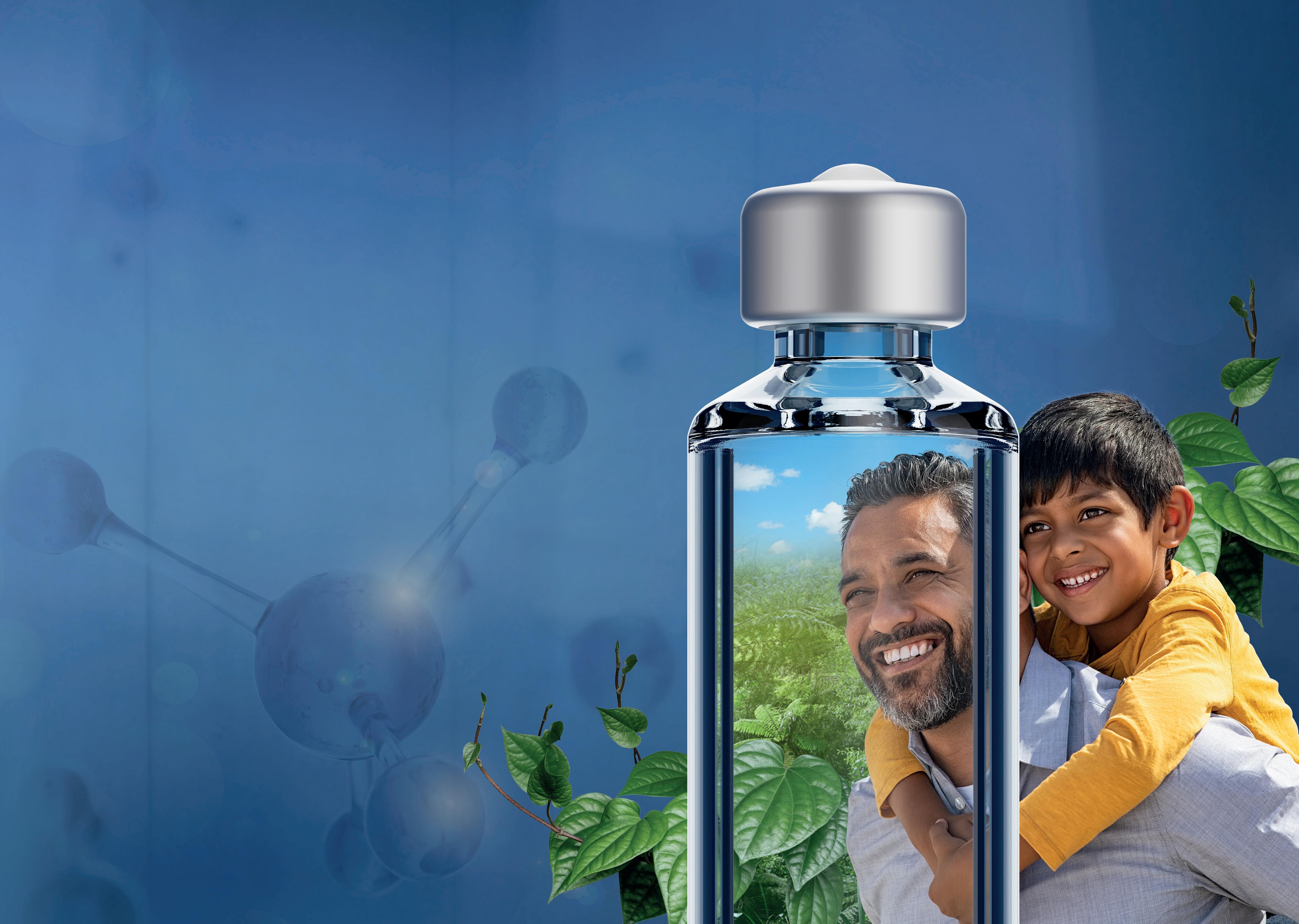
Visit us at the CPHI Milan, Hall 20 Booth 20C16, to learn more!




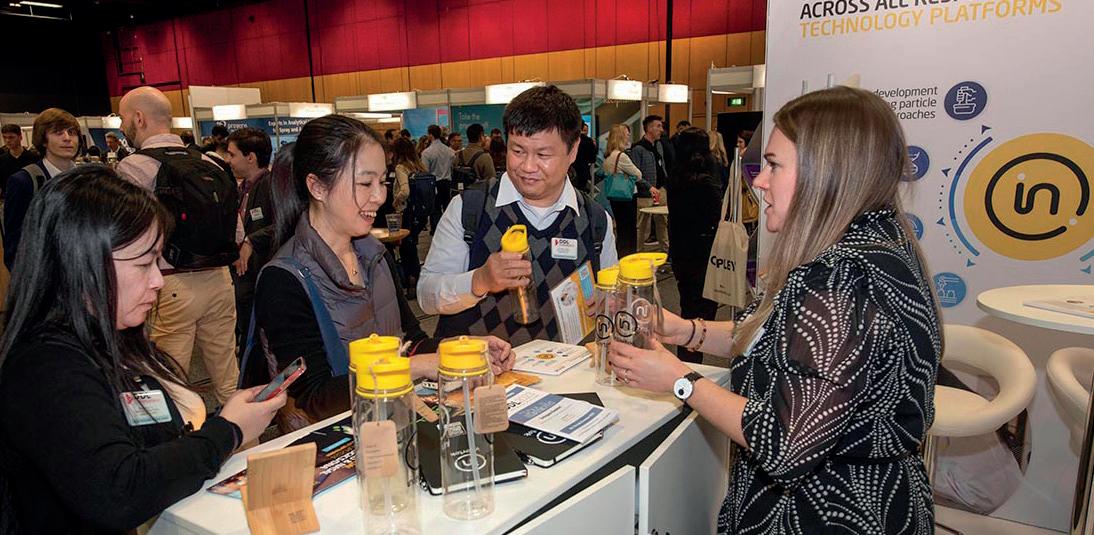

The Premier International Pulmonary and Drug Delivery Conference 11/12/13th December 2024
Edinburgh International Conference Centre or virtual
The DDL Conference is in its 35th year and attracts in excess of 1000 attendees worldwide. The conference includes a large industry exhibition, supported by over 100 international companies, a scientific poster hall, expert lectures and excellent networking opportunities over the 3-day event.
Anniversary Gala Dinner
A complimentary dinner and evening entertainment for all attendees held at the National Museum of Scotland.

Read our 2023 ESG report




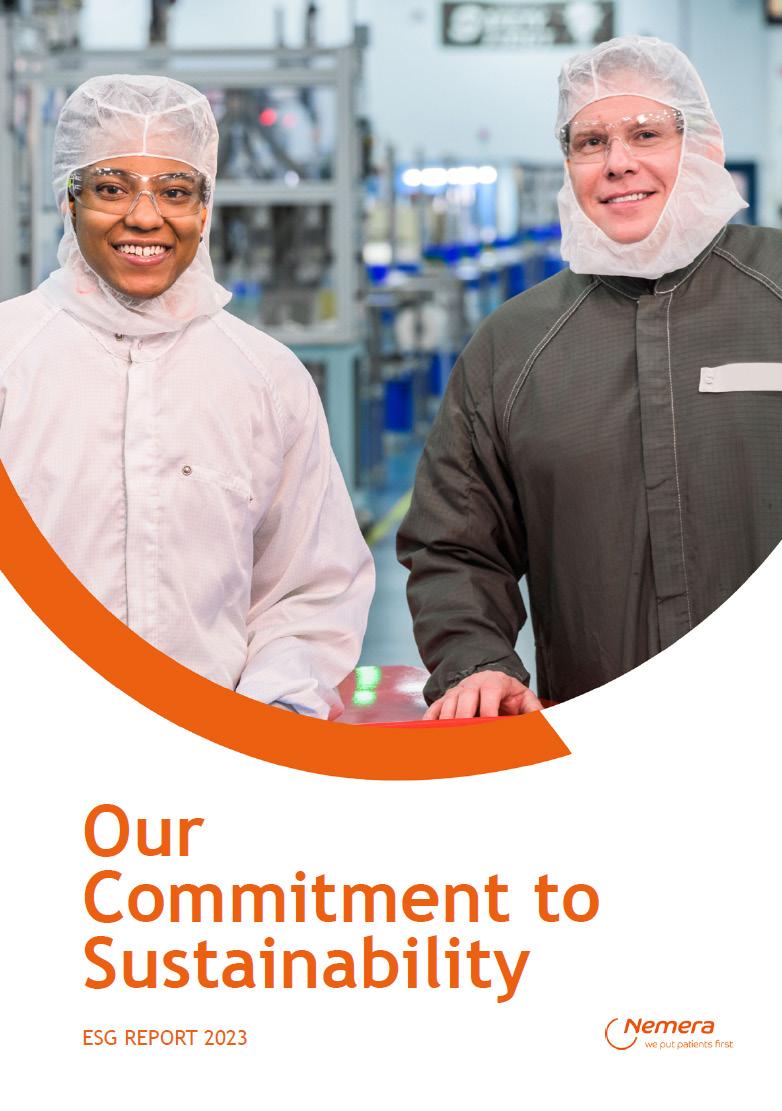


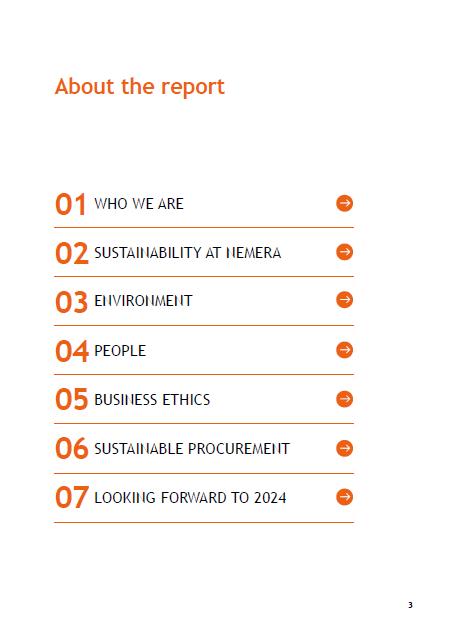

OPPORTUNITY THROUGH INNOVATION – ENVIRONMENTAL AND SOCIAL SUSTAINABILITY IN INJECTION DEVICES
In this article, John Merhige, Chief Commercial Officer, and Dan Thayer, Communications/IR Director, both at Credence MedSystems, discuss how the successful implementation of ESG principles in the pharmaceutical sector requires innovation that allows sustainability to be seen as an opportunity rather than a burden. Furthermore, the authors present the case that improving on the social aspect of ESG is just as important as improving on the environmental side.
Across all industries, forward-looking companies are aiming to implement more sustainable practices and create more sustainable products. In the face of the global climate crisis, and the major policy efforts of governments worldwide to tackle it, the move is becoming a necessity. However, it need not be a compromise –indeed, if more sustainable ways of doing and making things are going to take root, they should be seen as an opportunity to be seized, rather than an obligation to be met, with the potential for companies to reduce costs, environmental impact and societal burdens.
In some industries, the option exists to take a “move fast and adjust” approach to innovation. However, that is not the case in pharma. As a heavily regulated industry with a direct impact on the health of the patients it serves, the pharma industry is naturally conservative and risk-averse when it comes to radical or rapid change. However, this need for a steady,
cautious approach does not exempt pharma from the need to innovate –the need for sustainability is here, and both its demands and its opportunities are immediate.
Much like a proverbial oil tanker, the giants of the pharma industry turn slowly, so it is the role of smaller, emerging companies to present innovative technologies and approaches that can help their larger, more established partners adapt more swiftly to the needs of the moment. Credence MedSystems understands this dynamic and is leading the way in implementing and facilitating environmental, social and governance (ESG) practices with its “Innovation Without Change” approach. Credence’s technology is designed to work seamlessly with current pharma practices and infrastructure, making it easy to adopt and incorporate into existing production processes, while also providing the benefits of increased environmental and social sustainability.
“Much like a proverbial oil tanker, the giants of the pharma industry turn slowly, so it is the role of smaller, emerging companies to present innovative technologies and approaches that can help their larger, more established partners adapt more swiftly to the needs of the moment.”

John Merhige
Chief Commercial Officer
T: +1 844 263 3797
E: info@credencemed.com

Dan Thayer Communications/IR Director E: info@credencemed.com
Credence MedSystems, Inc
1430 O’Brien Drive, Suite D Menlo Park CA 94025
United States
www.credencemed.com
“This anticipated market growth means that minimising the environmental impact of injection devices is a pressing concern for the industry.”
ACHIEVING ENVIRONMENTAL SUSTAINABILITY IN PHARMA
When most people discuss sustainability, it is the environmental aspect of ESG that first comes to mind. This is a critical area for the pharma industry to improve on, but doing so presents a number of significant challenges; any changes made within pharma must first be looked at through the lens of patient safety, which must always be the top priority. Because of this, certain obvious approaches to improving environmental sustainability, such as recycling, are uniquely difficult for pharma.
While some pilot schemes have been trialled for recycling non-invasive delivery devices, such as inhalers, this is significantly more problematic for injectable therapies, as needle reuse and needlestick injuries pose a significant hazard to the health of patients, caregivers and healthcare professionals –as well as the wider population if the devices are not properly disposed. Therefore, any injection system, even if there is a reusable element to it, is going to include a disposable element by necessity.
As such, injection system developers must consider alternative approaches to reducing the environmental impact of their products. Compounding this, injection device usage is expected to increase significantly due to the massive growth of GLP-1 analogues for the treatment of obesity and diabetes – with GLP-1 users in the US forecast to reach 30 million by 2030.1 Overall, the global selfinjection device market was valued at US$6.5 billion (£4.9 billion) in 2023, with an anticipated compound annual growth rate (CAGR) of 5.11%,2 while the global prefilled syringe market is expected to achieve revenues of $7.1 billion in 2024, growing to $13.1 billion in 2030 at a CAGR of 10.8%.3 This anticipated market growth means that minimising the environmental impact of injection devices is a pressing concern for the industry.

There is, however, a natural solution to this conundrum – minimising the material and size used in and by these injection devices. This approach makes sense not only from a sustainability perspective but also from a business standpoint. Reducing the material used in a drug delivery device will reduce its overall mass. This, along with innovative design, can minimise the volume occupied by the device. Taking these steps can have follow-on benefits throughout the product lifecycle.
For example, reducing mass and volume has a huge impact on logistics, where lighter products reduce the fuel consumption required to transport them and smaller products mean that more can be transported in the same vehicle, which is especially valuable for products requiring cold chain storage – approximately 35% of the market in 2022.4 Another major consideration here is secondary packaging; smaller products require less packaging, which further reduces the material requirements of the overall product. The global pharmaceutical secondary packaging market was valued at $6.2 billion in 2022.5 It is easy to see how these factors cascade and compound on each other, combining to produce meaningful reductions in environmental impact and, crucially, total cost of ownership for the end product.
In this way, reducing the material requirements of a device is an unequivocal good for pharma companies. Unlike some other approaches, such as switching to equivalent amounts of more environmentally friendly but more expensive materials, or purchasing credits from carbon or plastic offsetting schemes,6 material reduction is not a compromise between sustainability and profitability; rather, it is a boon to both at once, which is vital to ensuring that sustainability programmes succeed and become embedded within companies’ cultures and practices.
INNOVATION WITHOUT CHANGE IS THE WAY FORWARD
The Credence Companion® Safety Syringe System (Figure 1) is a perfect example of this in action. To combat the pervasive hazard of needlestick injuries in healthcare, many device companies have developed needle safety systems that automatically secure the needle after use. Typically, these systems involve a bulky add-on assembly around the syringe that significantly increases material use, volume and weight. The Credence Companion, on the other hand, employs an integrated approach that retracts the needle into the plunger rod at the completion of the injection, achieving the benefits of a passive needle safety system without significantly adding to the material, weight or footprint of a standard syringe barrel (Figure 2).
In a study comparing the Companion 1 mL long format to a leading conventional add-on safety device, the Companion was shown to eliminate 54% of the weight of added components, use only 40% of the plastic, occupy 47% of the volume pre-use and occupy
2: The Credence Companion syringe with the needle assembly mounted on a standard syringe barrel to provide integrated needle safety.

“The Companion was shown to eliminate 54% of the weight of added components, use only 40% of the plastic, occupy 47% of the volume pre-use and occupy 33% of the volume post-use.”
33% of the volume post-use (Figure 3). Reducing the post-use footprint by two thirds carries the added benefit of a smaller volume needing to be disposed of, making more efficient use of the space in sharps containers and therefore reducing the number of sharps containers used and labour associated with changing them. Furthermore, compatibility with industry standard syringe barrels and standard nest-and-tub formats enables pharma companies to use the barrels they prefer and maintain their existing filling processes.
Another clear example where compromise is not required to achieve sustainability is the Credence Dual Chamber Syringe System, which is used to deliver drugs that require constituents to be kept separated during storage. The most common approach to addressing this challenge is to use a vial kit that includes numerous vials, syringes, needles and other components in a large tray and package (Figure 4). This approach presents obvious sustainability challenges, as well as usability challenges that risk the successful and safe dosing of the medication.
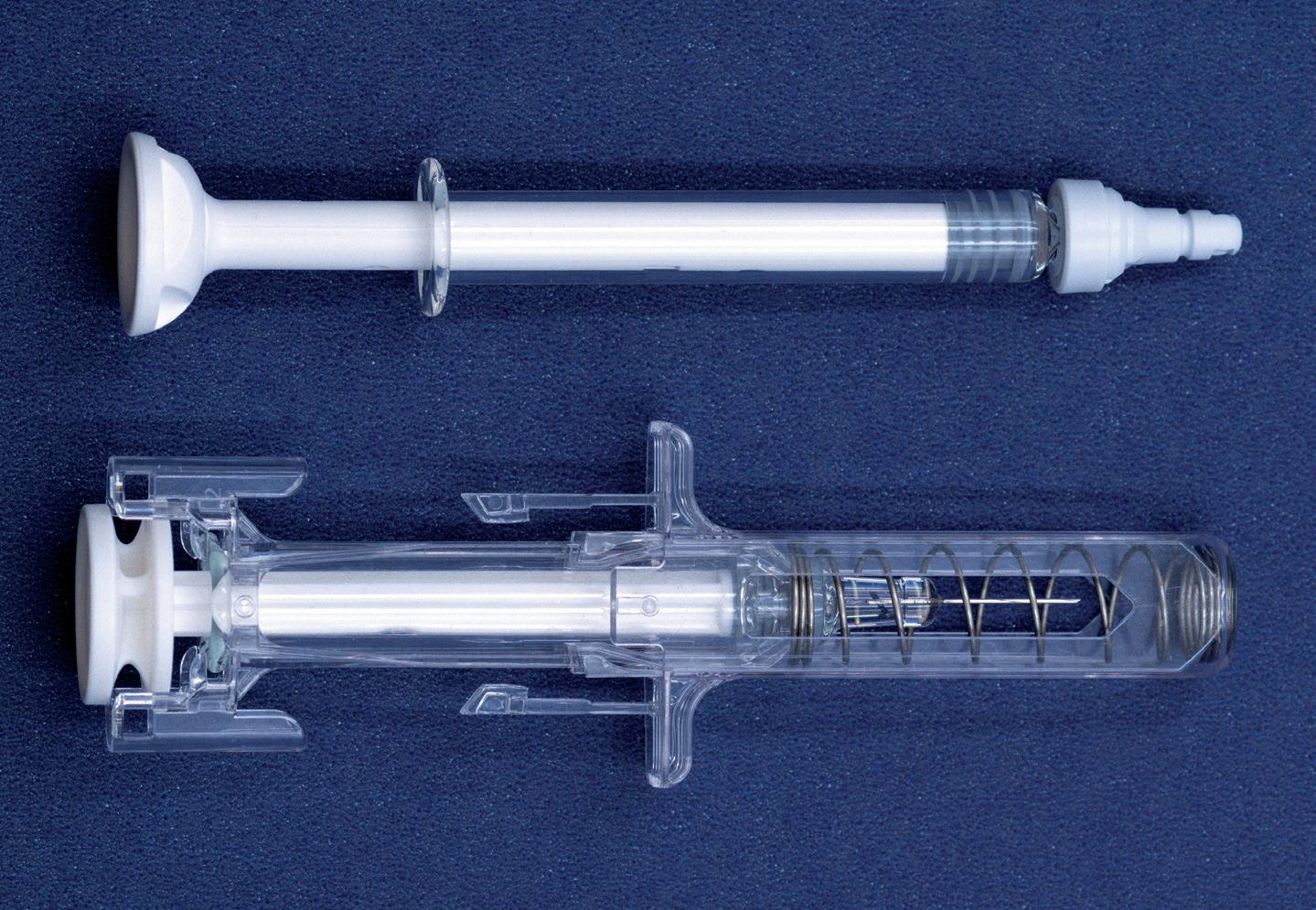
Older dual-chamber technologies are also an option, although they are traditionally large, costly and complex devices that are difficult to manufacture and even more complex to use. The Credence Dual Chamber system is different. At first glance, the Credence Dual Chamber system looks like an ordinary syringe; it uses a standard syringe barrel with Credence’s internal technology dictating the flow of liquid. The Credence Dual Chamber system can enable either:
• Reconstitution of a liquid from the rear chamber into another liquid or solid in the front chamber prior to injection, or
• The sequential delivery of two liquids.
In each option, the system allows a familiar, user-friendly and ready-toinject format (Figure 5). Furthermore, the Credence Dual Chamber system includes the same integrated passive needle safety features of the Credence Companion. Both these systems are emblematic of Credence’s Innovation Without Change approach. By leveraging current prefilled syringe manufacturing infrastructure and assimilating into existing filling lines, the Credence Companion technology does not necessitate a significant shift in pharma manufacturers’ current processes, keeping the cost of adoption low and obviating the environmental impact of building and installing extensive
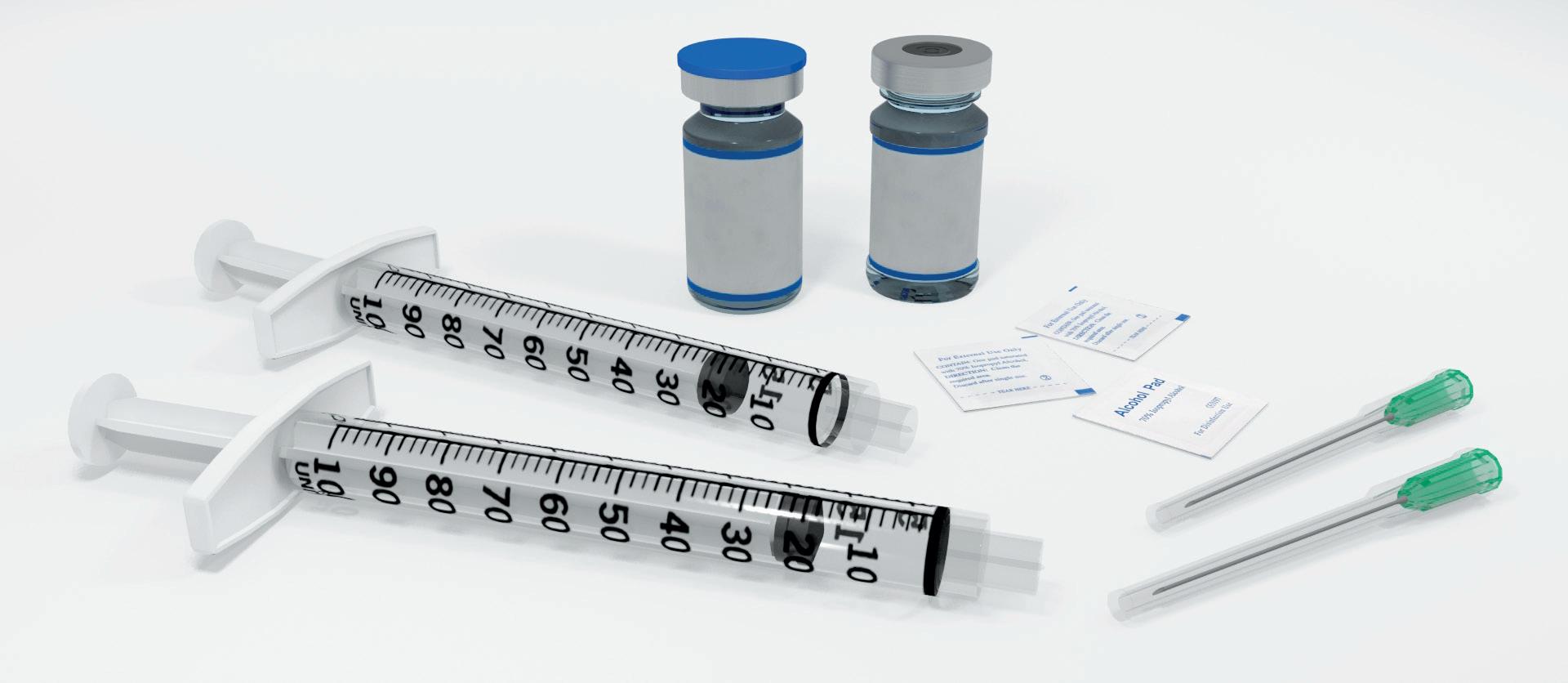



machinery for new production lines. Ensuring compatibility with current syringe barrels and manufacturing infrastructure/ processes reduces the cost of ownership, minimises the risk of adoption and smooths the path to market.
In fact, Credence’s Innovation Without Change philosophy extends beyond its technology and into its production and logistics strategies as well. The company understands that continuity of supply is crucial in pharma, and so it partners with well-established and trusted contract manufacturing organisations for the commercial manufacturing of its Companion and Dual Chamber systems. This ensures continuity of supply and integrates seamlessly into the existing business models of the pharma industry, enabling partners to take advantage of Credence’s innovations without changing their own operating procedures.
Holistically, Credence’s technology and strategic approach enable both sustainability improvements and cost reductions across the value chain. By offering injection systems that fit within the footprint of existing prefilled syringes, not only does Credence directly reduce the material requirements
and cost of ownership of these systems, it reduces the logistical burden as well. By applying Innovation Without Change thinking to environmental sustainability and taking a material reduction approach, sustainability becomes an opportunity rather than an obligation.
MORE THAN JUST THE ENVIRONMENT –SOCIAL SUSTAINABILITY
Often, environmental considerations are both the beginning and end of a discussion about sustainability. However, while carbon footprint and material usage are critical aspects of sustainability, it would be a major mistake to neglect the social aspect of ESG. Ultimately, patients and healthcare professionals are at the core of the pharma industry – by aiming to better serve the needs of these stakeholders and reducing the burdens that treatment places on them, the industry can produce better, more desirable products and create opportunities for numerous advantages, such as increased patient adherence, reduced cost of healthcare and improved outcomes.
“By aiming to better serve the needs of these stakeholders and reducing the burdens that treatment places on them, the industry can produce better, more desirable products and create opportunities for numerous advantages.”
One of the biggest challenges currently facing the drug delivery and pharma industries is that of low patient adherence to their therapies. Low adherence results in a worsening of patients’ conditions and increased hospital admissions, putting a greater strain on global healthcare systems. Taking a social sustainability approach is key to tackling problems such as adherence – by reducing the burden of treatment on patients, it makes it easier for them to remain adherent, and therefore more likely that they will do so.
There are already trends within the industry leading in this direction. One of the most important of these is the trend towards at-home self-administration of injectables, which gives patients greater autonomy, reduces the need for travel to clinics and lessens the burden on healthcare professionals. However, self-injection presents its own challenges for patients –they are frequently non-expert users and must be responsible for proper and safe storage, complex preparation (sometimes including mixing and reconstitution), accurate dosing and the safe disposal of potentially dangerous sharps waste.
Credence’s technology provides ready solutions to these challenges. At the heart of Credence’s design philosophy is the fact that patients are people, so delivery devices must be designed with people in mind. By integrating Credence technology into a standard syringe with a novel approach where the mechanism of action provides important user cues, the Credence Companion and Dual Chamber systems achieve multiple social sustainability objectives at once. First, and most obviously, the inclusion of a passive needle safety system drastically reduces the chance of a needlestick injury, along with all of the subsequent anxiety, trauma and cost that can come with it. Audible, tactile and visual cues inform the user when the drug has been fully delivered and the needle has been safely retracted, providing comfort and clarity during a stressful procedure. The postinjection format with the needle fully protected makes the disposal of sharps waste safer and easier. In addition, the Dual Chamber system enables an easier and more intuitive reconstitution or sequential delivery process, without adding multiple packages, steps, waste and training, thereby promoting safe, accurate and successful administration.
Beyond the environmental and societal benefits directly associated with the Credence Companion and Dual Chamber, these systems can also enhance the value of related device formats. Typically, selfinjecting patients prefer the flexibility of choosing between a standalone syringebased system, where they have more control of the injection, and a doseassisting device such as an autoinjector. And, with sustainability in mind, it is highly desirable for the autoinjector to be a reusable device, with a disposable prefilled syringe loaded by the user.
The small footprint of the Companion and Dual Chamber systems allows for a reusable autoinjector with a comfortable and efficient form factor, which has both usability and environmental advantages. The needle retraction into the plunger rod ensures that the disposable element is small, safe and easily removed by the user. As such, Credence technology enables the implementation of reusable autoinjectors and minimises waste while improving usability and safety for the user. This is a clear example of how ESG factors frequently overlap, so taking a holistic approach to both social and environmental considerations is always advantageous. Credence’s Innovation Without Change approach once again demonstrates the way to make sustainability an opportunity.
CONCLUSION
The pharma industry is not an exception to the global push towards sustainability, even while regulation and patient safety concerns pose unique challenges. To make sustainability work for the industry, it must be seen as more than an obligation or a compromise – a positive business case
“The
small footprint of the Companion and Dual Chamber systems allows for a reusable autoinjector with a comfortable and efficient form factor, which has both usability and environmental advantages.”
must be made for it, with sustainability going hand in hand with reduced costs and improved outcomes. To achieve this, it is crucial to adopt an Innovation Without Change approach to implementing more sustainable products and practices.
Credence is showing the way forward in this effort, with the Credence Companion and Dual Chamber systems being ideal exemplars for how innovative emerging companies can forge ahead and provide an implementable pathway for larger, more established companies to adopt. By reducing material usage and minimising the need to alter existing infrastructure, the pharma industry can achieve sustainability gains and cost reductions across primary and secondary packaging, logistics and manufacturing.
Furthermore, by expanding the sustainability conversation to consider both the environmental and social aspects of ESG – reducing the burden of treatment on patients and healthcare systems as well as reducing the environmental impact – the industry can ensure that the steps taken towards sustainability are lasting and effective. With its Companion and Dual Chamber platforms, Credence has
ABOUT THE AUTHORS
John Merhige is Chief Commercial Officer at Credence MedSystems, leading the company’s commercial activities and external collaborations. Previously, he was VicePresident of Market Development at Sanofi. He came to Sanofi upon its acquisition of Pluromed, where Mr Merhige was a member of the executive management team leading the company’s sales and marketing efforts. Prior to Pluromed, he founded Prelude Devices to target early-stage medical device technologies for development and commercialisation.
Dan Thayer is Co-founder of Credence MedSystems and is the current Communications/ IR Director and Observer to the Board of Directors, as well as having also served as the company’s Technology Director. Mr Thayer has over 20 years of experience in the injection drug delivery space, working as the Lead Inventor, Managing Director and Co-founder of Medical Convenience Products and other medtech ventures.
demonstrated that sustainability need not be a burden, but can in fact be the driver behind products that are better for users, better for the environment and better for the pharma industry as a whole.
ABOUT THE COMPANY
Credence MedSystems is an innovator in drug delivery devices, solving emerging challenges in parenteral drug delivery. Credence’s philosophy of Innovation Without Change results in products that impress and protect end users while preserving pharma’s existing processes, sourcing strategies and preferred primary package components. The Companion® family of syringe systems includes proprietary needle-retraction technology, reuse prevention and other critical safety and usability features in staked and Luer needle formats. The Dual Chamber platform offers simplified and safe delivery of complex drug products requiring reconstitution or sequential injection at the time of delivery. The Credence Connect™ Auto-Sensing Injection System incorporates automatic real-time monitoring of critical injection data into a reusable ergonomic finger grip. Additional products, such as metered dose devices, multi-length staked needles and other novel devices, address the needs of specific therapeutic markets.
REFERENCES
1. “The increase in appetite for obesity drugs”. J.P. Morgan, Nov 2023.
2. “Global Self Injection Device Market Size, Share, and COVID-19 Impact Analysis, By Product, By Usability, By Application, and By Region, Analysis and Forecast 2023 – 2033”. Spherical Insights, Mar 2024.
3. “Prefilled Syringes Market Size, Share, & Trends by Type, Material, Design, Application, & Region –Global Forecast to 2030)”. Markets and Markets, Jun 2024.
4. “The evolving cold chain needs of the pharmaceutical industry”. Maersk, Apr 2024.
5. “Pharmaceutical Secondary Packaging Market”. Roots Analysis, Mar 2022.
6. “Plastic Credits: How Much Do They Cost? Factors That Influence The Price Of Plastic Credit”. ALLCOT Trading, Dec 2022.

PDA Universe of Pre-Filled Syringes and Injection Devices Conference 2024
22-23 OCTOBER | PHOENIX, AZ | #PDAups
Explore Groundbreaking Innovation in Injectable Drug Delivery
This conference is the premier event for professionals in the pharmaceutical, biotech, and medical device industries. Whether you’re involved in R&D, manufacturing, quality, regulatory affairs, or marketing, gain invaluable knowledge and strategies to advance your injectable drug delivery programs.
The exhibit hall presents cutting-edge solutions from 120+ companies and an empowering venue to learn, connect with peers, and meet potential new collaborators and partners.
This peer curated conference promises an unparalleled lineup of expert speakers and thought-provoking plenary sessions:
Regulatory Landscapes and Strategies for Combination Products
• Desiree Crisolo, Sr. Director, Head of Global Regulatory CMC Policy and Intelligence, Biogen
• Andrea Redd, Associate Vice-President, Global Regulatory Affairs, Drug Delivery and Combination Products, Eli Lilly and Company
Current Opportunities and Challenges with Large Volume Injections – Market Overview and Delivery Options with Focus on Injection Tolerability and Pain
• Phil Green, PhD, President, Chesapeake Pharma
• David W. Kang, Director, Innovation, Halozyme, Inc.
• Galen Shi, PhD, Vice President of Delivery Devices, Eli Lilly and Company
Drug Delivery Platforms – Compare and Contrast Device and Pharma Perspectives
• Jakob Lange, PhD, VP & Head of Account and Business Development, Ypsomed AG
• Bart E. Burgess, Global Head, Portfolio Strategy and Customer Solutions, SHL Medical AG
• Ronald Forster, PhD, Executive Director, Amgen Inc.
• Jeffrey Givand, PhD, Executive Director, Device and Combination Product Development, Merck & Co., Inc.
How Cross-Industry Collaboration Can Boost Sustainability
• Serkan Oray, PhD, Vice President, Head of Device, Packaging, and Wearable Technologies, UCB Pharma
• Cedric Gysel, Senior Manager Sustainable Solutions, Johnson & Johnson
There’s More!
• Combination Products Workshop 24-25 October
This hands-on workshop is the preeminent immersion for guiding you through the entire lifecycle of combination products and medical devices, with a focus on critical development activities.
• Training 21 and 24 October
• Drug Delivery Device and Combination Product Risk Management and Safety Assurance Cases
• The Manufacture of Sterile Pharmaceutical Products Using Blow-Fill-Seal Technology
• Assessing Packaging and Processing Extractables/Leachables
• Understanding Container Options and User Needs for Syringes, Cartridge Containers, Wearables, and Drug Delivery Systems
Visit pda.org/ups2024 to learn more and register for the main conference, workshop, and training courses.
Versatile design intuitive delivery
Your fill volume may change, with Aidaptus® auto-adjust plunger technology your auto-injector doesn’t need to




Commercially available
Accommodates both 1mL and 2.25mL glass syringes in the same device
See our auto-adjust plunger technology in action
Find out more by scanning the QR code or visiting ompharmaservices.com/odd-oct2024
*In addition to an air bubble and overfill
Aidaptus® is a registered trademark of Owen Mumford Ltd, ©️2024
OMPS/odd/ad/ob/1024/7





In collaboration with
INTERVIEW
In this exclusive interview with ONdrugDelivery’s Guy Furness, Glenn Svedberg, Group Sustainability & Technical Director at Nolato Group, engages in a wide-ranging discussion around the role and importance of sustainability in the drug delivery industry, and how Nolato Group has approached implementing this critical aspect of the modern industry landscape. Mr Svedberg considers how sustainability factors play into the relationship between CDMOs like Nolato and pharma companies, the importance of materials and how to drive forward sustainability goals within the pharma and drug delivery industries.

GLENN SVEDBERG, NOLATO GROUP
Glenn Svedberg has spent 30 years in the manufacturing industry, primarily in managerial commercial roles, including at Volvo Group, Ericsson, Flex and Rexam (today part of Berry Global). At Flex, he held different roles leading up to becoming Managing Director for Scandinavian operations, responsible for 1,400 people in five factories. Since 2007, he has been part of Nolato Group, having served as Managing Director and Head of Pharma Packaging for Nolato Cerbo and having been located in the UK for two years whilst integrating Nolato Jaycare in 2012–2014. He is dedicated to lean principles as well as quality and, for four years, in parallel to his Managing Director role, he led the Medical Excellence programme across all Nolato Medical Solutions sites globally. He has a genuine interest in sustainable development and his work has led to Nolato Group being awarded Ecovadis Gold status recognition. In June 2021, he assumed the role as Group Sustainability Director at Nolato Group and Vice-President Business Development for Medical Solutions. Since 2023, he has headed Nolato’s Technical Design Centers in Europe, North America and Asia.
QMany of our readers will be familiar with Nolato already but, for those who might not be, could you provide an overview of the company – in particular, its offerings that are relevant to the drug delivery industry – and a brief overview of your career and current role there?
APut simply, Nolato is an international solutions provider within polymer-based materials. Our offering spans the entire value chain, including sourcing, moulding, assembly and full-box build, with capabilities covering the full spectrum from development to high-volume production. We always work in close partnership with our customers. We don’t offer many platform products,
so we primarily produce custom products. We have 26 sites and four technical design centres across 10 countries, and we support innovative and sustainable products of tomorrow. About 50% of Nolato’s revenue comes from its Medical Solutions division, which is primarily engaged in in vitro diagnostics, drug delivery and medical devices.
As to my role, I’ve spent my whole career working in manufacturing companies across a variety of different industry segments, including heavy vehicles, telecoms, electronics and rigid food packaging. But, for the last 17 years, I’ve been with Nolato Medical Solutions, working as a Managing Director for a variety of companies within Nolato Group,
and later coming to drive our medical excellence initiative globally. Today, I’m the Group’s Sustainability and Technical Director, responsible for our sustainable development and technical design centres. I report to our CEO and I’m part of the executive management team.
The non-medical business is called Engineered Solutions, and we work with a number of different industry segments under that umbrella. However, within that, we focus on some specific areas, including telecoms, automotive, hygiene products and gardening equipment, to name a few examples – it’s a quite wide range of segments and products.
QHow does having operations across the world and in a range of diverse industries give Nolato useful insights into sustainability as it applies across geographic areas and industry sectors to different products and technologies?
AThere are different drivers in the various industries. Before I jump into sustainability, it’s worth mentioning that different industries have significantly different priorities. For example, for consumer electronics and those sorts of products, it’s all about speed and innovation. For automotive, on the other hand, their focus is on lean manufacturing and optimised cost. And, as I’m sure you know, the medical sector’s top priority is quality and consistent processes, which can lead to a resistance to change. So, when it comes to adapting for sustainability, we know change is always a headache for the medical sector, due to regulatory compliance and validation, which often means slower development – the medical sector is usually a few steps behind.
“When it comes to adapting for sustainability, we know change is always a headache for the medical sector, due to regulatory compliance and validation, which often means slower development – the medical sector is usually a few steps behind.”
With regard to checking out new materials, the automotive sector is out in front because they have been pushing towards using recycled materials for quite a long time. Having said that, we have seen many engineers and purchasers from the automotive industry move into the medical industry, and some of their behaviours and thought processes are following, but at a slower pace. At Nolato, we are advocates of the mass balance approach, with a mix of bio-based, bio-circular and recycled content, as it offers a drop-in solution that is compliant with regulatory requirements. Chemically recycled materials are clearly coming up as an option for medical applications in the near future, with substantial commercial capacity expected from 2025, while we already use pure bio-based resin for some of our packaging products.
A large part of why the medical sector is so cautious is because of legislation, so we need to have support from the legislators to drive the development. Certainly, in Europe, following the Green Deal, there is a range of different new directives, such as the Design Directive, that now will come into play. The EU is putting a lot of energy into this, and I expect that things will move as a result. And, because most pharma and medical device companies are global, if they move in Europe, they’re likely to move elsewhere as well.
QWhy is sustainability of particular importance to a company such as Nolato?
ANolato started in 1938, just before the Second World War broke out. At that time, it was not easy to get ahold of materials, so the founders went out to collect old rubber boots that they had previously sold because they couldn’t get enough as raw material. They then used chemical recycling to get the material they needed. In a way, we’re closing that circle now. In the early Eighties, we started with the first Nolato Spirit booklet. That was before we were listed – we were just a small, mid-sized Swedish company. The owners, who still have the majority of the voting power on the company’s board today, take sustainability very seriously.
We understand that we’re part of a larger picture and part of society and think that sustainability is not only necessary for the planet and for the future – it’s also actually a business opportunity for us.
“We understand that we’re part of a larger picture and part of society and think that sustainability is not only necessary for the planet and for the future –it’s also actually a business opportunity for us.”
This way of thinking is why we are integrating sustainability in our business model. We want to help guide our customers and support them in making more sustainable products for the future.
QHow are sustainability initiatives organised and structured at Nolato in practical terms?
AIt’s a combined model. We are a decentralised company, meaning that we have a small central Group management with some small support functions, with the majority being the individual companies and the managing directors driving those businesses within the various business areas, reporting to the President. A number of years ago, I was appointed as Sustainability and Technical Director, reporting straight to the CEO, with the goal of really integrating sustainability into the Group.
We don’t want to have a specialist – we want to have sustainability really infused in how we do business at a cultural level. What we’re doing centrally is to set the direction and the pace for the Group. For example, this includes initiatives like our climate strategy and signing up to programmes like the Science-Based Targets Initiative, which need to be done at a corporate level. We also have a small team that supports the individual companies.
For the last decade, we’ve been focused on Scope 1 and Scope 2 greenhouse gas emissions, making our factories as energy-efficient and lowemitting as possible, increasingly
running on renewable energy. Now, we’ve started focusing on Scope 3 emissions – which comprise 96% of our overall footprint. We have identified that over 70% of that originates from the input material, which makes it really important to operate as a gatekeeper between suppliers and customers, trying to identify what products and applications can be used in line with our sustainability principles, and ensuring that we have these materials available, as well as finding new alternatives on the market.
QCan you explain how, as a CDMO, Nolato enables its customers to make more sustainable products and follow eco-design principles with their products?
AThis is really getting to the core of how to do sustainable development. The most important thing is for us to get in during the early stages of a development project. This is when engineers can ask “How do we apply eco-design principles to this project?” Eco-design is something you can only really do when you start a project. If you are going to just produce something that has already had its design frozen, that really limits your ability to have an impact.
Fundamentally, eco-design is quite easy if you peel off all the layers; it’s about making things simpler and easier, understanding that less is more, and, in many cases, applying common sense (Figure 1).




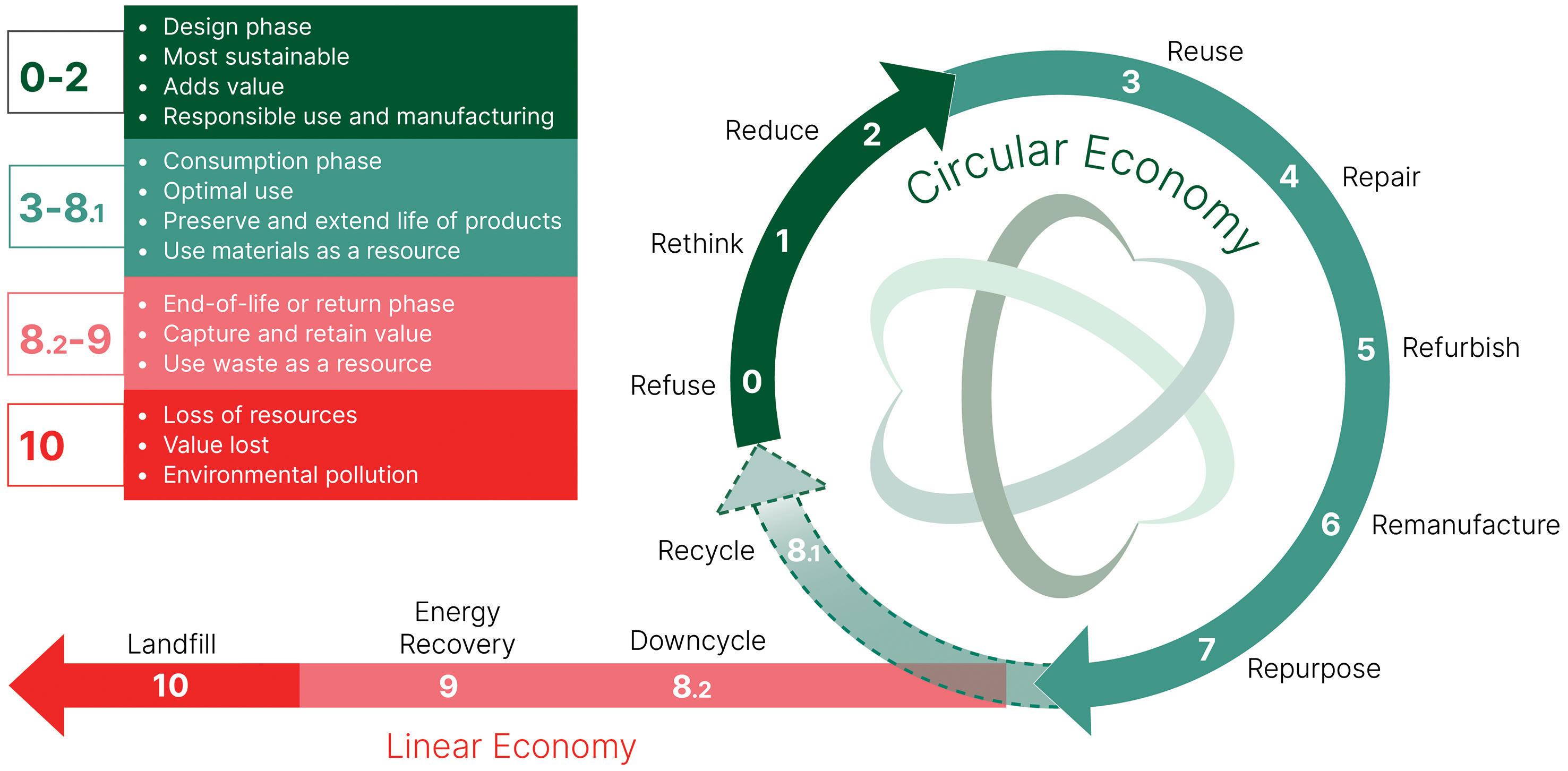
One key thing we can do is apply digital tools to simulate parts. I’m not just talking about mould-flow analysis and how we can make a component. The real value comes when you combine those slightly distorted virtual models out of the moulding-phase simulation and then assemble them – still virtually. This lets you understand the functionality of your product to really see where you have the greatest potential for improving that functionality and optimising your carbon footprint.
For example, this approach can show parting lines where you have issues and how the part interacts during the assembly process. Then, using software from our computed tomography scanner, we can set up a measurement study on the virtual model before we even have a physical product. And, by having a conversation with the customer at that stage, live on the computer, we can turn the product around – show that there’s a potential issue here, a possibility to reduce material use there, really get at what improvements are possible.
There can be a bit of engineering negotiation here on where you should set the tolerances so that we can focus on the right areas. This way, we can gain more freedom in the manufacturing process and maybe eliminate some excess material, which is key to creating a good product overall. Of course, we then use some of the other principles as part of the ecodesign model, such as selecting materials that aren’t over-specified, making good
use of standard polypropylenes or polyethylenes instead of going to highend polyamides and polycarbonates, because that has a major impact on the CO2 footprint.
We also try to reduce the number of different materials and move more and more towards mono material products, which facilitate better end-of-life processes. And, if it’s a high-value product, we also look at the assembly process, trying to ensure that it’s possible to disassemble it and, potentially, refurbish it (Figure 2).
In summary, you could say we enable and support our customers with an array of different software packages and analytical methods, which we then combine with our operational model.
QTaking a step back and looking at sustainability globally, what’s your take on how things stand – what is going well and what needs to change or improve?
AI think that we certainly need both the carrot and the stick. There will be companies on the forefront of progress that are not afraid to make moves that will potentially cost them some money because most of these alternative, more sustainable materials will currently be at a premium cost. Having said that, there are also options where you can use simpler materials with cost savings and still meet the technical requirements. One example is changing a polycarbonate/acrylonitrile butadiene
styrene blend into modified polypropylene for an existing part to reduce CO2.
Looking beyond that, I think there has to be a combination where the legislators become more open to sustainable options, as well as make sustainability requirements a necessity for new products, just as we’re currently seeing take place in the packaging industry. This will also be true of other industries, but pharma puts a heavy emphasis on the risk management side of things, so you have to know what you’re doing when implementing new processes and materials.
However, I think that there has been a lot of confusion surrounding sustainability because there is not a clear definition of certain key words around the subject. What makes it difficult is that some companies have a somewhat relaxed approach to how they use sustainability terminology, especially in marketing. I hope that will change with the EU’s Green Claims Directive. What we need is standardisation of the language and methods we use.
For example, when you calculate your CO2 footprint, we should know that you are doing it the same way the rest of the industry does it. The vocabulary needs to be clear. Part of this is the need to educate and train our own employees, but it is also critical to educate our customers, suppliers and the general public actually about this. Simply put, sustainability is a new broad science area and there is too much confusion surrounding it.
“There
are standards about lifecycle analysis calculations, but they are still too general, too fluffy, for the nitty gritty details of making a polymer.”
Some industries are already pursuing this. For example, one initiative in the chemical industry is developing a guideline where they agree on how they calculate a product’s lifecycle analysis and how they perform product CO2 footprint calculations. This way, companies across the industry will all be following the same definitions and process. I’ve seen similar steps taken in the automotive industry. It’s really positive when an industry comes together and establishes the rules they are going to collectively operate under.
Overall, there are standards about lifecycle analysis calculations, but they are still too general, too fluffy, for the nitty gritty details of making a polymer. We need general agreement on everything from energy and water usage to transport, and that agreement needs to translate into clear guidelines for companies to follow. I think that there will be requests from customers – we’ve seen it in some industries already – where, when we provide a quote for a product, they provide a spreadsheet for us to populate with sustainability data, sort of an open book calculation. This lets
“We need general agreement on everything from energy and water usage to transport, and that agreement needs to translate into clear guidelines for companies to follow.”
customers calculate not only the price of the component but also the product’s CO2 footprint as a part of the quotation.
QFinally, how do you see sustainability evolving in the longer term, as it applies in the pharma industry and drug delivery sector in particular –what do you think the future holds?
AIf we start from the top, I think there are three pillars – you have environmental responsibility, social responsibility and then you have business conduct, which is primarily about business value. At present, the industry is mainly focused on the environmental aspect, on the climate and CO2. However, while CO2 is a pressing issue that we need to address, water usage is also a major factor that we should be talking about. Some business segments, especially those closer to the electronics industry, typically use a lot of water. We need to keep in mind that there is more to sustainability than just the CO2 footprint – for example, the preservation of biodiversity is starting to receive greater focus.
Legislation will have a key role to play in this. For example, with the EU’s new Corporate Sustainability Reporting Directive, I expect that more focus will be placed on the other factors as well, not just on climate. Another EU directive, the Corporate Sustainability Due Diligence Directive, relates to companies’ responsibility for working conditions and human rights in their supply chains. I think this is part of the social responsibility aspect – brand owners will have to protect their brand by being able to assure their
customers that they have their supply chains under control. This introduces new things to consider, like geopolitical risk. If you have certain suppliers in certain countries, you’ll need to have more than a remote questionnaire; you might have to make an on-site audit and have more robust risk-management systems in place.
So, I think sustainability will cover a wider array of principles and not just be singularly focused on climate change, but that it will still be the main topic for the immediate future.
ABOUT THE COMPANY
Nolato Group is a Swedish group with operations in Europe, Asia and North America. The group develops and manufactures products in polymer materials such as plastic, silicone and thermoplastic elastomers for customers within the medical technology, pharmaceuticals, consumer electronics, telecom, automotive, hygiene and other industrial fields. Nolato’s offering spans the entire value chain – from solutions-oriented development focused on sustainability to product delivery.
www.ondrugdelivery.com/subscribe
Glenn Svedberg
Group Sustainability & Technical Director
T: +46 70 1910419
E: glenn.svedberg@nolato.com
Nolato MediTech AB
Medicingatan 4
Hörby 24293 Sweden
www.nolato.com
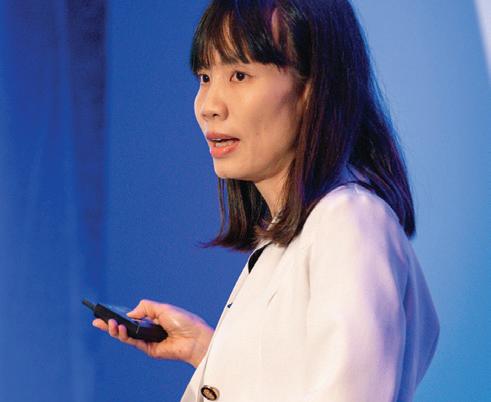








We create sustainable solutions
Full-service manufacturing capabilities
Nolato is a full polymer solutions provider and a natural choice of partner early on in the process to develop and manufacture next-generation Medical products, with a focus on Medical Devices, In-Vitro Diagnostics, and Drug Delivery Devices. By engaging at an early stage of design, we create the conditions for more sustainable solutions. We partner with our customers to transform a product design into a high-volume, zero-defect manufacturing process. Our state-of-the-art Class 7 and 8 cleanrooms, at our 20 global medical manufacturing sites, feature advanced robotics and vision inspection systems to ensure consistent quality, and our in-house tooling, molding, high-speed assembly, decoration, and packaging capabilities complete our one-stop-shop manufacturing portfolio.
Virtual prototyping helps get things right from the start
Applying integrated, simulated design solutions early on at the design stage of development reveals opportunities for improvement before producing a physical prototype or the associated manufacturing tooling. Virtual prototyping is an amazingly powerful tool for ensuring efficiency and cost-effectiveness. Identifying enhancements early on in the process saves both time, money and reduces CO2 footprint.
Want to know more? Contact us!
Medical Solutions, Box 93, SE-242 21 Hörby, Sweden. Phone: +46 (0) 415 19 700, www.nolato.com
CREATING VALUE –SUSTAINABLE APPROACHES FOR THE MEDICAL DEVICE INDUSTRY
In this article, David Pircher, Global Head of Business Development at BAUMANN Medical, provides insights from a sustainability journey, showcasing what suppliers can contribute and how innovation and partnership support a common vision. The article outlines where the industry stands and why sustainability is a top priority, with concrete examples. Future perspectives are explored to consider how progress can be made together through stakeholder involvement and innovative approaches.
In the last decade, sustainability has emerged as a pivotal issue across various industries, including the medical device sector. Traditionally, the medical device industry has primarily focused on advancing technology and improving patient outcomes. However, with growing global awareness of environmental impact and the need for resource conservation, there has been a notable shift in how sustainability is perceived within this industry.
“Over the past few years, the focus on reducing the impact of climate change has increased across the medical and pharmaceutical industries.”
Over the past few years, the focus on reducing the impact of climate change has increased across the medical and pharmaceutical industries.1 As a supplier to this industry, BAUMANN is affected by this issue in exactly the same way as others and is keenly aware of how well the company can contribute to the overall effort to make the world a better place.
WHY IS SUSTAINABILITY SO IMPORTANT?
BAUMANN addresses sustainability not just as a trend or to meet customer demands but to embed sustainability in the company’s DNA, and has therefore made it a strategic pillar. The company says it can contribute to a better and more sustainable future. In so doing, it has anchored a classic environmental, social and governance (ESG) approach within the company (Figure 1).

David Pircher
Head of Business Development
T: +41 55 286 8814
E: david.pircher@baumann-group.com
BAUMANN Springs Ltd Fabrikstrasse 1 8734 Ermenswil
Switzerland
www.baumann-group.com
BAUMANN is driven by an aspiration to become a key partner in the circular economy for medical devices, transitioning from sustainable practices to fully circular solutions.2 The company’s focus encompasses key ESG topics, guided by the pillars of sustainability – safeguarding the planet’s integrity and enhancing quality of life.
BAUMANN considers and understands the economy, ecology and social affairs not
“Sustainability is a journey, and the first step is to align the company, customers and suppliers.”
as contrary but as complementary systems. Therefore, it is less a question of how the greatest possible profit can be achieved with the least possible damage to humanity and the environment, but more about which business model can achieve a positive impact in all three systems.
WHERE DOES BAUMANN STAND TODAY?
Sustainability is a journey, and the first step is to align the company, customers and suppliers. Strategic anchoring is key to success. In this process, BAUMANN engaged with its stakeholders to define the vision, goals and measures together.
In the first phase, evaluating key data was essential, involving external partners
and specialists. EcoVadis, a leading provider of business sustainability ratings, intelligence and collaborative performance improvement tools for global supply chains, was invaluable during this initial evaluation. Thanks to a transparent process and clear outcomes, significant measures have already been initiated and realised. BAUMANN can now also share certificates with its customers directly via a global and transparent database.
A further step involved collecting even more concrete data to accurately record BAUMANN’s carbon footprint. In the financial year 2023, efforts were focused on introducing the process for measuring the carbon dioxide equivalent (CO2e) emissions for all factories. Following a pilot and training phase between June and August, the process for calculating the CO2e footprint was rolled out in all factories. This step is crucial for defining influential measures that can be placed and implemented on the company’s roadmap. Figure 2 illustrates the development of absolute CO2e emissions from 2021 to 2023 for BAUMANN. From an overall perspective, Scope 3 plays the largest role in CO2 distribution. Even if BAUMANN has only partially covered Scope 3, it is already known that raw materials for metal products leave a large footprint; around 60% of Scope 3 comes from raw materials.
It was important to BAUMANN to use standardised frameworks for measures and target tracking and to align activities with recognised frameworks (Figure 3). That is why the UN Sustainable
“Increasing energy efficiency and the use of renewable electricity to reduce the carbon footprint are a top priority.”
Development Goals guide the company’s efforts towards achieving a commonly used framework. This approach not only helps BAUMANN to speak a common language but also enables it to achieve its goals more efficiently.3
CONCRETE EFFORTS
When BAUMANN discusses concrete measures resulting from assessments, the focus is on those that also create value for customers and other stakeholders.
Increasing energy efficiency and the use of renewable electricity to reduce the company’s overall carbon footprint are a top priority. BAUMANN is pursuing a two-pronged strategy: switching to renewable energy when purchasing electricity and, wherever possible, generating its own clean energy.
• In Singapore, solar energy production began in 2023, covering between 16% and 27% of BAUMANN Singapore’s total electricity consumption with solar panels. The average monthly reduction is 18.7 t/CO2e, which the company considers to be a substantial improvement (Figure 4).
• In Switzerland, renewable electricity has already been included in the basic electricity mix. However, this is not yet sufficient, and an additional 20% was targeted for replacement with renewable electricity in 2023. The goal is to continue increasing this quota step by step.
In 2022, BAUMANN defined measures to reduce electricity consumption through a broad-based campaign and by involving employees. This resulted in a variety of inputs, including upgrading the lighting to the latest LED technology, increasing the use of motion detectors for lighting, optimising the heating oven management system, and designing general switch-on and switch-off cycles for machinery.
For the management of hazardous substances in the environment, health and safety area, BAUMANN has clear plans and is well-positioned in hazardous substance
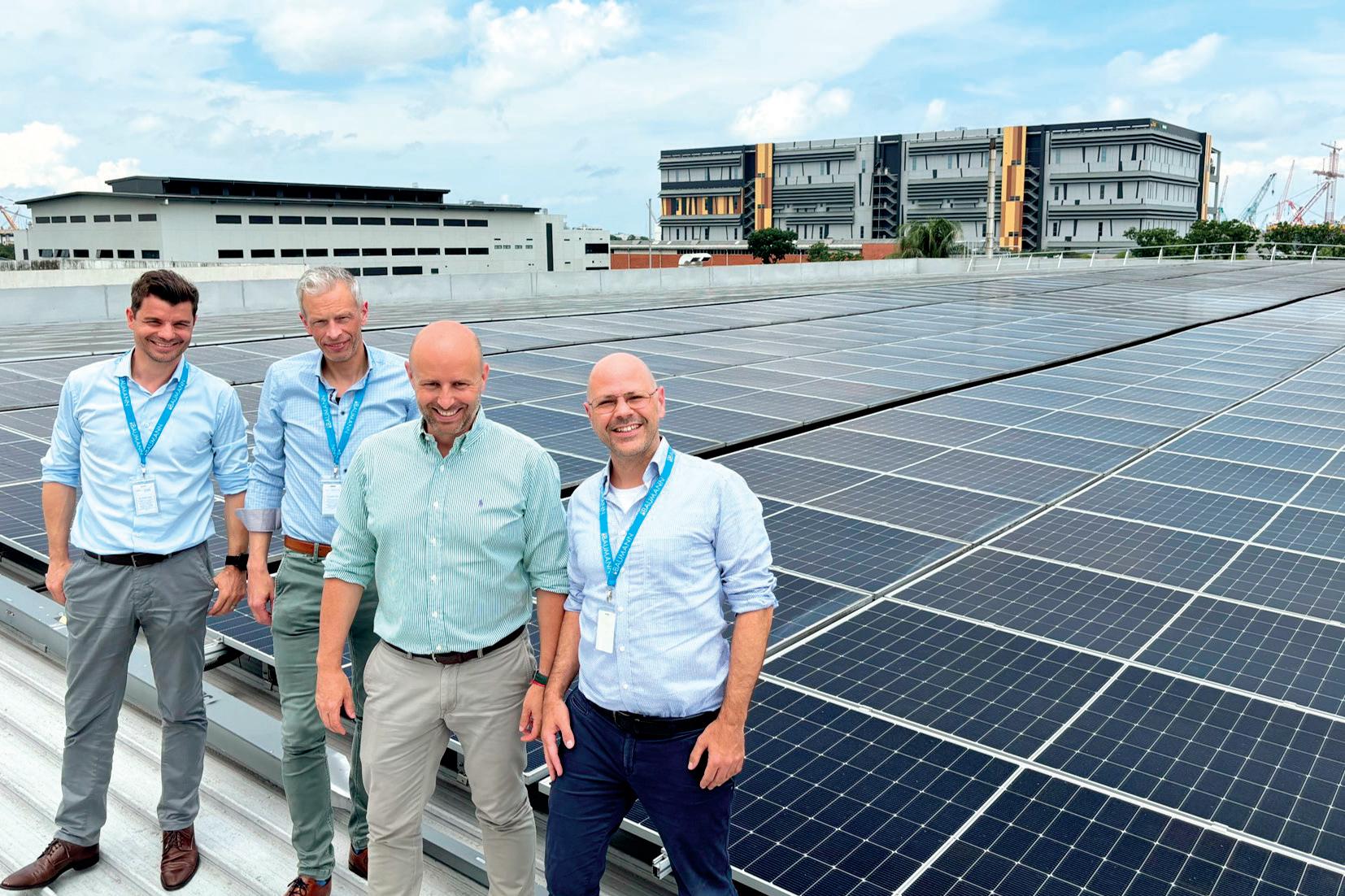
management. This is not only for the protection of employees but also to ensure risk-free use for further processing and for consumers of the products. For more than a decade, no incidents have occurred involving dangerous substances.
ACCELERATING SUSTAINABILITY
BAUMANN has identified clear next steps to achieve significant progress in sustainability (Figure 5). As a top priority, the company has set the goal of significantly reducing negative environmental impact and climate effects caused by its business activities. The achievement of these goals is measured by two key performance indicators (KPIs):
1. Increasing the percentage of green electricity from 20% (2022) to 40% (2026)
2. Reducing the consumption of natural gas by 20% by 2030 relative to 2022.
These two KPIs were chosen because they are primary drivers of BAUMANN’s CO2e footprint (electricity and natural gas consumption). Together with other local actions aimed at reducing emissions, BAUMANN aims to reduce emissions in Scope 1 and 2 by 10% (relative to the weight of produced articles) by 2026. For example, improving energy efficiency through insulation and optimised heating and cooling strategies at the company’s headquarters.
Since 80% of BAUMANN’s gas consumption in Switzerland, which has a total impact of around 900,000 tonnes CO2e per year, is currently used for heating, the reduction in natural gas consumption can be drastic. If it is not feasible to construct new buildings, maintaining older buildings becomes crucial. The leverage BAUMANN is seeking, for instance, by renovating the building envelope of its
“By determining the CO2 footprint early in the design phase, BAUMANN can collaborate with customers to revise designs and cut emissions.”
headquarters, which is over 100 years old, is substantial and will reduce the total heating demand by approximately 60–80%.
Developing a more far-reaching strategy for employee wellbeing is not always just about measures in the environmental area, even though these often have the greatest visibility and provide significant benefits to customers. For example, to ensure optimal performance and superior products, the company focuses on the wellbeing of its employees. By fostering a positive culture and retaining its experts over the long term, BAUMANN secures the development and retention of valuable knowledge. This, in turn, enables the company to assist customers in reducing assembly line rejects through consistent quality and continuous product optimisation, ultimately enhancing overall cost efficiency.
Over the next few months, BAUMANN will enhance its systems to provide customers with precise product CO2 footprints. This will facilitate discussions on optimising products and processes, reducing both CO2 emissions and costs. By determining the CO2 footprint early in the design phase, BAUMANN can collaborate with customers to revise designs and cut emissions. For instance, reducing the number of coils in a compression spring for an autoinjector from 20 to 18 could lower its carbon footprint by nearly 20%, without impacting assembly line performance.
INTERACTION WITH STAKEHOLDERS
At BAUMANN, the emphasis is on partnerships to achieve sustainable goals. Addressing circular economy issues requires collaboration with all stakeholders to enhance the entire value chain.
The company aims to develop solutions with its customers, focusing only on concrete projects that make sense. BAUMANN has already received specific requests and is actively seeking dialogue, engaging in joint projects and setting
shared goals. While reports and certifications are important, collaborations must go beyond these formalities. The outcomes of shared sustainability approaches are:
1. Change from small bag packing to reusable box packing. This initiative was created together with the company’s contract manufacturer and packing supplier. Generically calculated, it is possible to reduce emission impact by over 80% by switching packing solutions.4
2. Collaborating with R&D and equipment suppliers, BAUMANN is testing energy-efficient heating technologies, such as resistive heating, which could save around 30% of energy compared with conventional batch ovens for compression springs. This will also reduce the product’s CO2 footprint, with further tests planned in production environments.
CONCLUSION
In most cases, measures to optimise sustainability benefit not only the company but also its customers and suppliers. However, sustainability is a journey – a journey that requires time, knowledge and experience, which BAUMANN would like to pursue together with its stakeholders. One aspect is particularly important: to address the issue sustainably, there must be collaboration within the industry and the sharing of common visions.
Collaboration is key to maximising value in sustainability. By working together early in the development of medical devices, components that are reusable can be designed without compromising patient safety or health. Involving BAUMANN early ensures optimal outcomes in achieving these goals.
As sustainability and circularity2 are fuelling innovation in the industry,
transforming the entire product design will help to create value propositions.5 All companies ultimately supplying the pharmaceutical value chain encounter significant challenges and bear the crucial responsibility of reducing their carbon footprints. BAUMANN is more than ready to start discussions and joint developments to change the future now. Further information can also be found in the company’s sustainability report.
ABOUT THE COMPANY
Founded in 1886, the BAUMANN Group is headquartered in Switzerland and employs around 1,400 people. Manufacturing over 4.8 billion springs, stampings and bendings annually – approximately 152 per second – BAUMANN operates in nine countries, maintaining strong values while adapting to diverse environments and cultures. BAUMANN Medical, an independent division within the group, provides tailormade solutions and services in medical devices. With ISO 13485 certified sites, it addresses the specific needs of the medical and pharmaceutical industries, solidifying its reputation as an expert in this field.
REFERENCES
1. “The CPHI Sustainability Report 2023: Towards a Greener Future”. CPHI, May 2024.
2. “Transforming the Medical Device Industry: Road Map to a Circular Economy”. Health Affairs, Dec 2020.
3. “Sustainability report 2023”. BAUMANN Federn AG, Mar 2024.
4. “The Potential Impact of Reusable Packaging”. McKinsey & Company, May 15, 2024.
5. Marquet M, Vetters R, “Driving Innovation in MedTech: The Power of Circularity and Sustainable Product Design”. EY, Jun 2024.
ABOUT THE AUTHOR
David Pircher is the Head of Business Development in BAUMANN Medical. As a member of the executive medical management team, he is responsible for strategic planning, marketing and business intelligence. Mr Pircher has over 25 years of professional experience, including more than 15 years in management, and he has been working in the medical devices sector for the past 10 years. Throughout his career, he has successfully led several significant strategic projects in a global context. Mr Pircher’s commitment to sustainability is driven not only by passion but also by the recognition of its importance as a societal necessity.















Need reliable, custom-made springs and stampings for your medical devices or pharmaceutical applications?


As a trusted global partner, we deliver precision springs and stampings tailored to your medical device or pharmaceutical applications needs. Our ISO 13485-certified facilities and experienced team ensure exceptional quality, performance, and competitive pricing.


















































Please contact us: BAUMANN Springs Ltd. +41 55 286 81 11 medical@baumann-group.com





How can we support you in the early stages of development?



baumann-medical.com



































SPRINGS & STAMPINGS FOR MEDICAL DEVICES & PHARMACEUTICAL APPLICATIONS








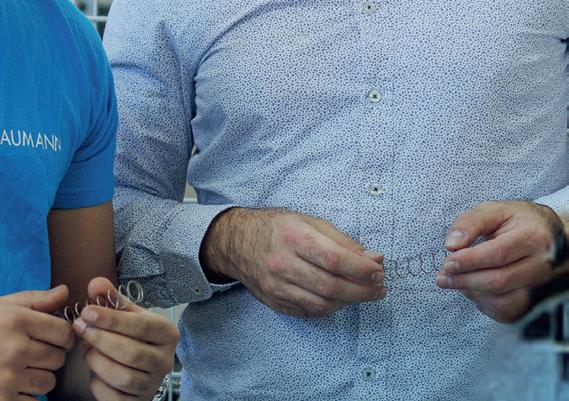




SUSTAINABLE DESIGN FOR HEALTHCARE DEVICES: PATHWAYS TOWARDS NET ZERO
Here, Will Davies, Design Consultant, and Holly Milston, Business Development Manager, both at Shore, consider sustainable pathways towards circularity in the medical device industry.
As pharmaceutical companies across the industry strive to implement and meet sustainability targets, every opportunity for device and system carbon footprint reduction should be explored. There are multiple pathways for sustainability improvements at every stage of a device’s lifecycle, with the ultimate goal being full circularity.
WHAT IS CIRCULARITY?
The circular economy represents the gold standard of device sustainability, aiming to capture and reuse all finite resources involved in the manufacture of a product indefinitely, minimising waste, resource use and negative external effects. It promotes the remanufacture of products and efficient recycling of materials, demanding that design attention is paid to every stage of
the product’s lifecycle. However, it is not all thankless hard work – the circular economy can deliver additional tangible benefits, such as cost savings through reduced production volumes and increased product reliability.
CIRCULARITY FOR DRUG DELIVERY DEVICES
Even without the adoption of a fully circular product ecosystem, there are many opportunities for sustainability enhancement that can be made to a device at every stage of its lifecycle.
Figure 1 illustrates the lifecycle phases of a product, each of which can be progressively broken down to identify potential opportunities and design approaches for sustainability improvement, as this article aims to demonstrate.

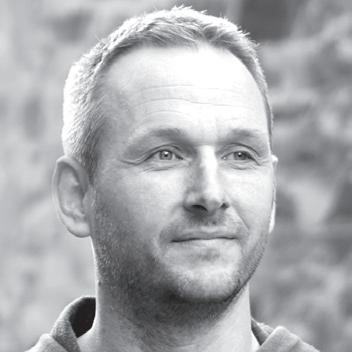
Will Davies
Design Consultant
T: +44 131 526 3538
E: wdavies@shore-group.com

Holly Milston
Business Development Manager
T: +44 7396 725553
E: hmilston@shore-group.com
Shore Waterside House
46 Shore
Leith
Edinburgh
EH6 6QU
United Kingdom
www.shore-group.com
Figure 2: Premium yet sustainable product packaging, constructed of card outer and with a pulp-formed inner tray.
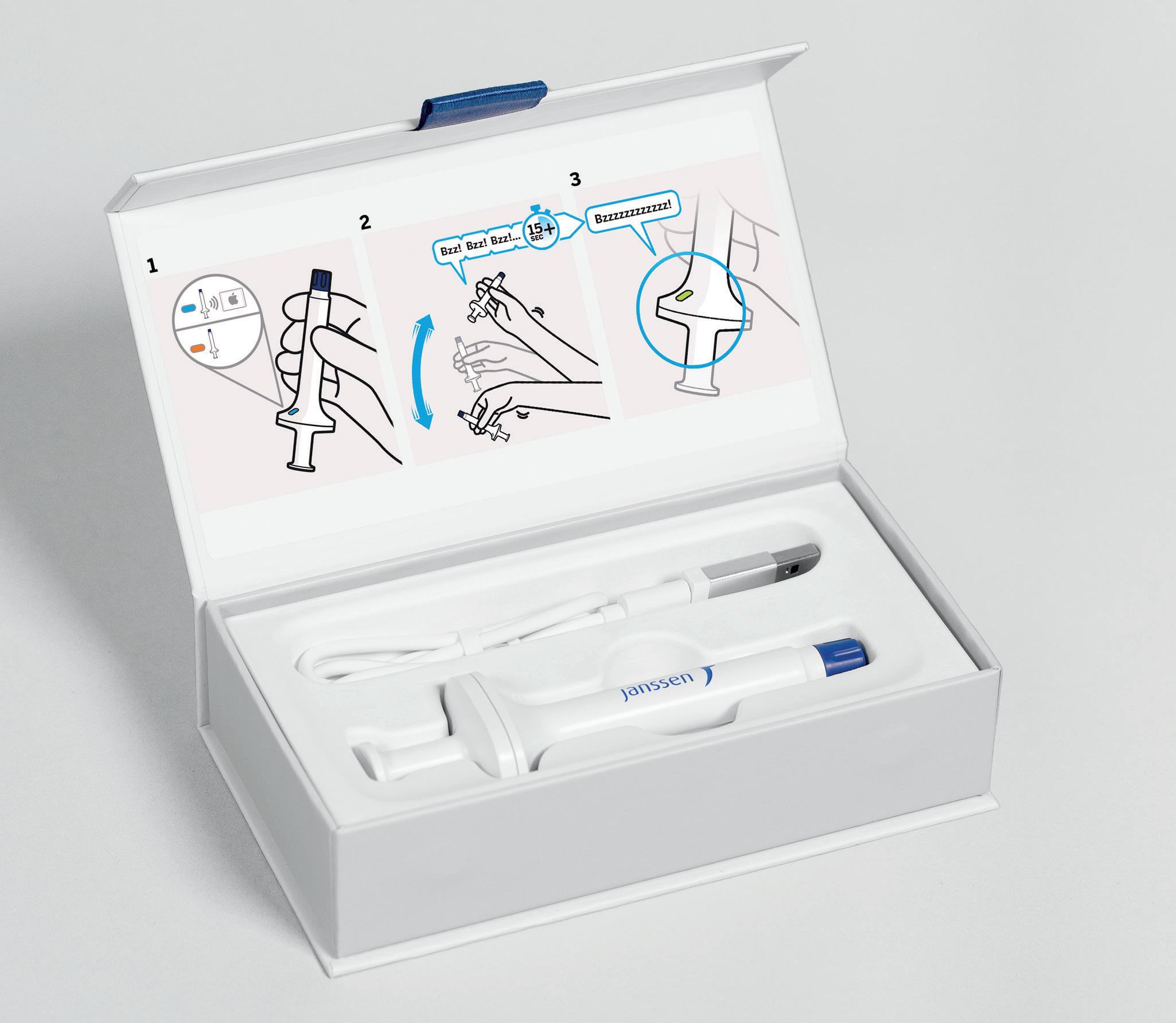
RAW MATERIALS
Any product should comprise a minimum necessary quantity of material, as every gram of material represents an embodied value of carbon, energy and natural resources.
Design for Resource Reduction
• Metals : Metal recycling is now sufficiently developed such that mechanical properties can be well defined in the recyclate, although typically of lower quality than a virgin grade.
• Polymers : High-quality grades of recycled-content plastic are now available. Bio-based plastics are derived either directly from crops, such as sugar cane, corn or castor oil, or indirectly from biomass derived from agriculture or forestry (e.g. cellulose). Biodegradable materials are commonly used in medical applications, such as drug release and tissue engineering; these are generally bio-based polymers, such as PLA, PHB, PHA, PBS and PCL.
• Alternatives: A significant development in sustainable biodegradable materials is that of paper (or pulp) injection moulding, which provides a potential alternative to plastic injection moulding, facilitating complex geometries, thin walls and low component weights, while also being highly sustainable (Figure 2).
COMPONENT MANUFACTURE
Every unit of energy or resource consumed during manufacture is embodied in the final product.
Design for Efficient Manufacture
• Facility power: Carbon emissions from power generation are embedded in products, making it important to select renewable energy sources.
• Plastic moulding: Minimise part size and complexity as smaller injectionmould presses and shorter cycle times consume less energy. Select efficient tools and processes, for example, gas-assisted injection moulding offers weight-saving and part-reduction benefits.
• Induction-heated tooling : Reduce material waste through precise and consistent heating, and increase production rates with faster cycles. The pinpoint accuracy and repeatability
“Every unit of energy or resource consumed during manufacture is embodied in the final product.”
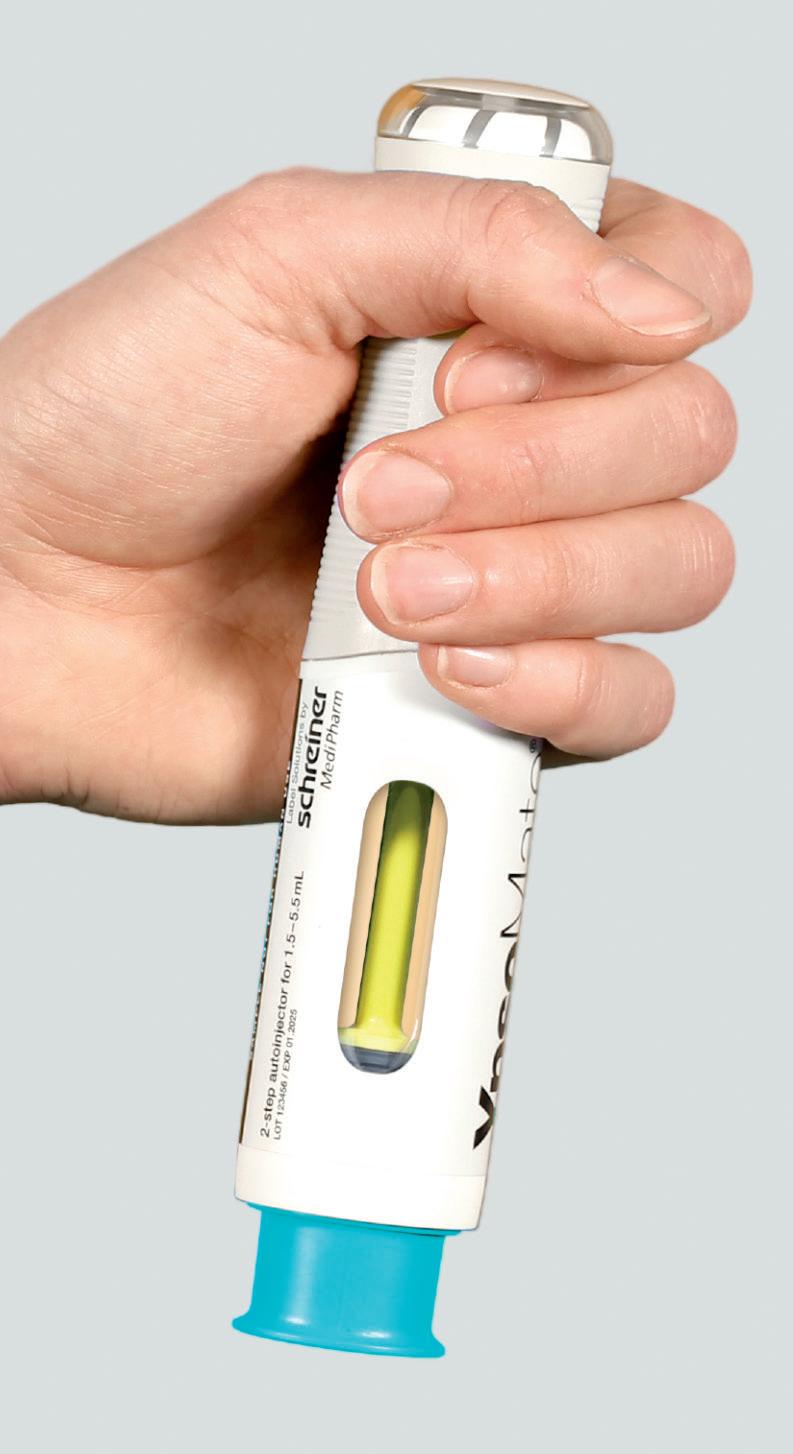
Figure 3: Sometimes, a purely mechanical solution may provide a preferential alternative to electronics; for example, drive systems or visual indicators, such as that employed by the YpsoMate 5.5 (Ypsomed, Burgdorf, Switzerland).
of induction-heated tooling minimises defects and operator variability, leading to higher-quality output and less resource-intensive manufacturing.
• Post-processing : Design with an increased lifespan in mind, as every post-process operation requires time, floor space and energy.
• Electronics and power sources : Electronics are so universal in today’s world of connected and smart products that it is easy to overlook how impactful the inclusion of electronic components can be. A simple printed circuit board may have an emissions footprint up to 20 times greater than the equivalent mass of plastic, with further negative effects, such as increased marine eutrophication (Figure 3).
PRODUCT ASSEMBLY
Assembly of a product also constitutes part of that product’s embodied energy. The faster and more efficiently that product can be assembled, the less power is consumed by the assembly plant per product.
Design for Assembly
• Facility power : As with component manufacture, the emissions are incorporated into the product, making it important to opt for a renewable power supply for assembly.
• Component assembly: Concentrate on assembly methods that are durable, reliable and have ease of disassembly. Permanent joining or trapping of dissimilar materials should be avoided. Screws, or other mechanical fasteners, can improve durability and repairability.
• Assembly and disassembly: These should be considered together. Jigs and fixtures should be designed concurrently with the device design to ensure maximum assembly and disassembly efficiency.
SHIPPING
The method and distance of product transportation from factory to point of use can have a significant impact upon its emissions footprint.
Design for Distribution
• Packaged product volume and mass: The smaller the packaged product, the more units can be transported per shipment. The lower the mass, the less energy and carbon are used to transport it.
• Modes of shipping : Plan supply chains and timescales accordingly. For international shipping, the lowest carbon method is by container ship. Cold-chain shipping drastically increases transport emissions, as it reduces the number of products per shipment due to additional insulation volume. Long-haul the impact of air freight is 100 times greater than that of container shipping. The worst option is cold-chain, shorthaul air freight, which can far exceed the impact of all other measures combined.
• Last-mile emissions: These are often overlooked. A customer driving to a pharmacy to collect a device may be transporting two tonnes of vehicle with them. Consider a product-as-a-service business model that uses a driver who combines the delivery to the customer with other devices or customers as part of a shared journey.
USE
Use-related emissions can be reduced through design enhancement, system change and influencing user behaviour.
Design for Sustainable Use
• Circular use: Design the entire ecosystem of the product to make it easy and intuitive for the user to return the product after use.
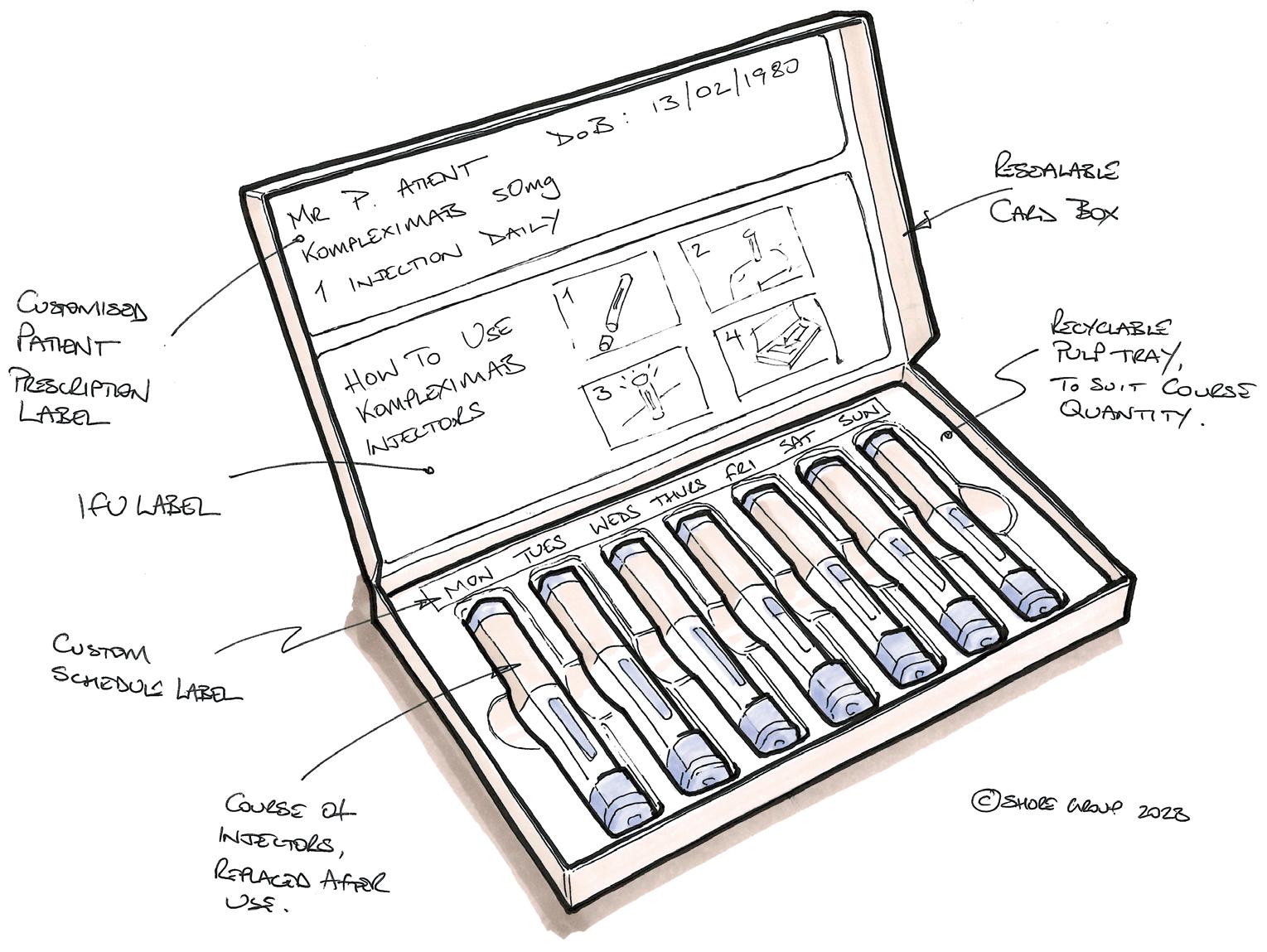
“Use-related emissions can be reduced through design enhancement, system change and influencing user behaviour.”
• Physical durability : This is one of the key contributors to a product’s sustainability. The longer a product is in service for, the fewer resources are consumed in the manufacture and disposal of replacement products. Emotional durability also promotes the physical durability of a product by increasing the emotional value of a product to the user.
• Resource reduction : Consider the reduction of power and waste during use, for example, energy-efficient components, effective thermal management and minimising single-use packaging elements.
REPROCESSING
“End of use” does not need to mean “end of life”; try to avoid the manufacture of replacement devices.
Design
for End of Use and Reprocessing
• Design for return: Make it easy and intuitive for the user to collect and return used devices (Figure 4).
• Design for disassembly : Design the product from the outset to be easy to disassemble into constituent components or modules. It should generally be assumed that the product will be recycled, or even remanufactured, at end of life and that the design should encourage this, especially as recycling processes and technology continue to develop.
• Design for remanufacture: Identify key components or sub-assemblies (modules) as candidates for remanufacture. Use lifecycle-tracking technology to monitor the device, module or component reuse, and do not exceed design service lifetimes.
• Design for recycling: Recycling is less preferable to reuse, but better than landfill or incineration.
DESIGNING FOR A SUSTAINABLE FUTURE
The ultimate route to net zero is for manufacturers to adopt circular economy models, which – particularly in the pharmaceutical industry – is a long and complex road that is likely to require regulatory change as well as business model reinvention. However, designers have the tools that allow them to be instrumental in developing products and services that will transition smoothly to circularity and have a significantly reduced environmental impact in the meantime. The imperative is clear, and constantly evolving design, manufacturing and material technologies and methodologies can be implemented today to bring the goal closer step by step (Figure 5).
ABOUT THE COMPANY
Shore is a medical device design consultancy that delivers end-to-end solutions that optimise usability and performance. With over 500 successfully completed projects, Shore tailors its approach to precisely fit each client’s unique needs, ensuring that products are delivered on schedule, within budget and with a focus on improving patient outcomes. Long-standing partnerships with some of the world’s largest pharmaceutical and medical device companies underscore its expertise in medical and drug delivery device development. A flexible and bespoke service ensures that Shore meets the specific demands of each customer, from early-stage feasibility all the way through to clinical manufacture and supply.
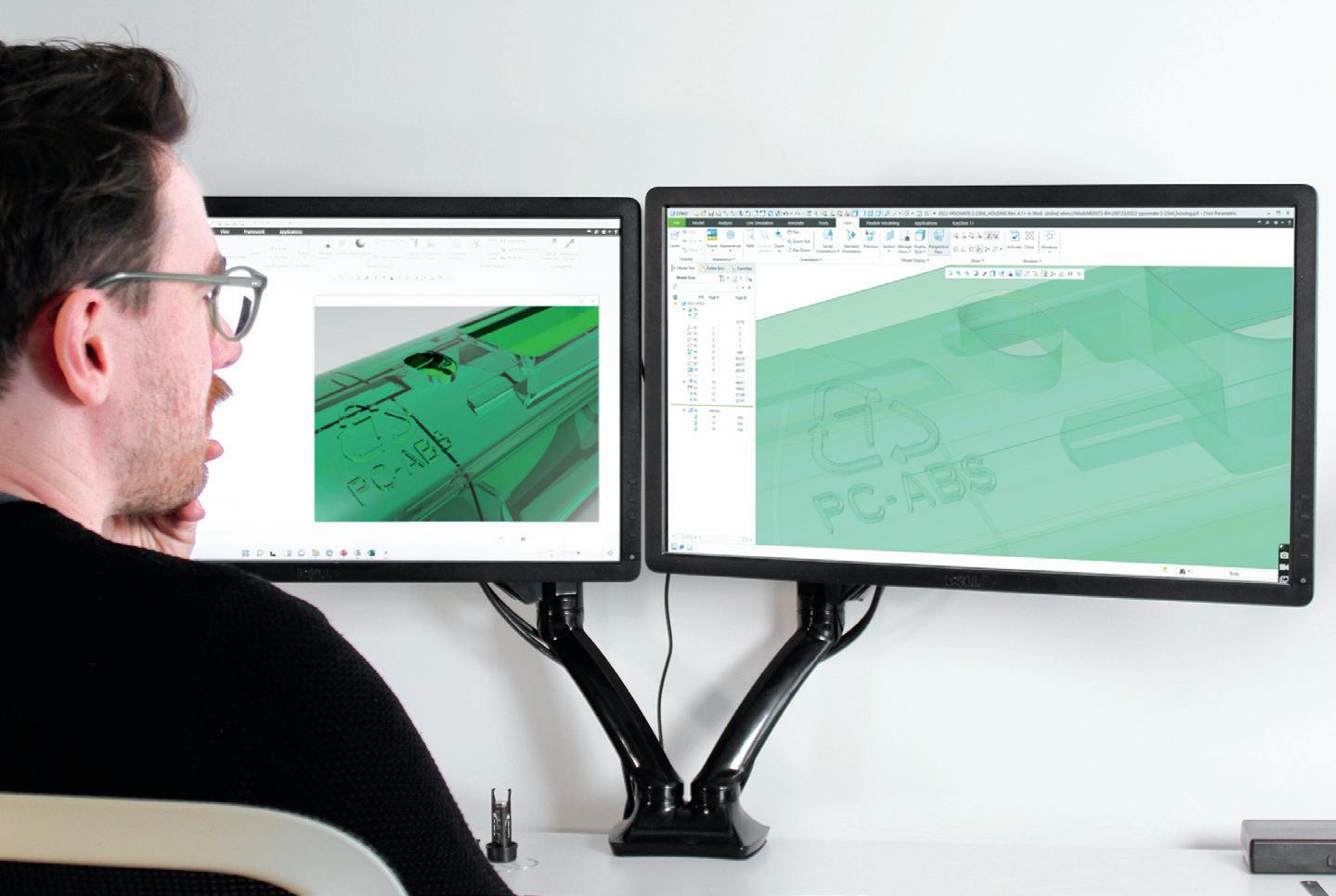
ABOUT THE AUTHORS
Will Davies, Design Consultant at Shore, has extensive experience in all stages of product development. This spans from concept ideation and mechanism design through to design for manufacture, and project and production management. Mr Davies has a deep understanding and appreciation of the underlying and subconscious values of design to consumers, end users, society and the environment, and how to use this successfully through design strategy for business. His expertise, coupled with his passion for design, allows him to deliver exceptional award-winning results for Shore’s clients.
Holly Milston, Business Development Manager at Shore, plays a crucial role in driving the company’s strategic growth within the medical device and drug delivery design sectors. Her responsibilities include initiating and managing client relationships, translating industry needs to internal teams and representing Shore at key industry events. With a background in graphic design and a passion for human factors and user experience, Ms Milston is dedicated to ensuring that devices are intuitive and safe, improving outcomes for both patients and healthcare professionals.
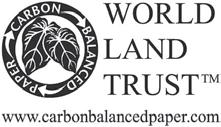
* using Forest Stewardship Council® certified recycled paper, vegetable-based inks, biodegradable laminates and carbon balanced materials offset via the World Land Trust™ following ISO140001 processes.
** by DHL using GoGreen Plus carbon insetting of at least 30% through the use of Sustainable Aviation Fuel (SAF), a biofuel substitute for traditional jet fuel, produced from renewable sources. Mailed to individual readers outside the UK by DHL using GoGreen, which offsets 100% of CO2 emissions.







Reducing the carbon footprint

Join us as we foster a more sustainable, efficient and responsible environment for drug delivery devices.
The NetZero Program provides significant CO2 reductions for each self-injection device
ISCC+ certified bio-based plastics based on the mass balance approach
Biocompatibility, functionality and safety are maintained so that no additional testing is required
Device transport trays are produced exclusively from recycled materials
All new platform products are based on ecodesign principles
For more information visit yds.ypsomed.com/sustainability or scan the QR code




PRIORITISING SUSTAINABILITY IN PHARMA
Here, Jessica Buday, Product Line Manager at Corning Pharmaceutical Technologies, discusses how, in partnership with West Pharmaceutical Services, Corning’s Viridian glass vials are able to simultaneously improve the sustainability and efficiency of pharmaceutical fill-finish lines compared with traditional ISO glass vials, due to their reduced glass volume and proprietary external polymeric coating.
This article is based on an article originally published in Pharma’s Almanac in June 2024, written by Jessica Buday and Dr David Alvaro.
Historically, the pharmaceutical sector has trailed behind other industries in vigorously addressing environmental sustainability – however, the tide is turning. Acknowledgement of the need to mitigate the environmental footprint of pharmaceutical processes, from development and manufacturing to distribution, is growing. This shift is embodied by efforts such as the “Sustainable Markets Initiative”, which has united a diverse coalition of over 500 entities, including global companies and leaders, to establish and pursue ambitious sustainability benchmarks across the pharmaceutical and healthcare sector.
An inflection point occurred in 2023, when executives from prominent pharma and life sciences companies joined forces within the Sustainable Markets Initiative Health Systems Task Force. The task force penned a candid open letter1 to the industry's suppliers, highlighting the pharmaceutical sector's sizeable environmental impact – the industry is responsible for roughly 5% of climate change factors, with its supply chains contributing a significant portion of that impact. This collaborative call to action emphasised the urgency of setting and achieving robust sustainability goals.
Many pharmaceutical company suppliers are already on this path, ambitiously integrating sustainability criteria into their strategies. It is no longer just about the
immediate utility of a product; the focus has expanded to encompass the environmental ethos of suppliers and their capability to support the client's sustainability objectives.
In particular, attention has been directed towards reducing the impact of secondary packaging, such as cartons, labels, packaging inserts and other packing materials. More recently, the industry has begun to tackle the more complex challenge of the impact of primary packaging. This presents a more significant hurdle, owing to the stringent regulatory requirements associated with materials that are in direct contact with the drug product. Every change must be carefully assessed to ensure safety and efficacy, along with environmental footprint.
A COMPREHENSIVE SUSTAINABILITY STRATEGY
Corning’s approach to sustainability combines product innovation and practicality to achieve wider adoption without compromising quality. This includes a commitment to ambitious environmental goals – aiming for a 30% reduction in direct and indirect greenhouse gas emissions (Scope 1 and 2) and a 17.5% absolute reduction in the broader emissions (Scope 3) by 2028, using 2021 as a baseline. This comprehensive strategy extends throughout the company’s entire

Corning Pharmaceutical Technologies
One Riverfront Plaza
Corning NY 14831-0001
United States
www.corning.com
West Pharmaceutical Services
530 Herman O West Drive
Exton PA 19341
United States www.westpharma.com

value chain, including the procurement of goods and services, production of capital goods and management of fuel and energy resources, as well as logistics.
In accordance with the Paris Agreement and the Science Based Targets initiative (a partnership between the Carbon Disclosure Project, United Nations Global Compact, World Resources Institute and World Wide Fund for Nature), Corning is dedicated to a sustainability ethos that spans from design and product development through to manufacturing and shipping. Recognising the finite nature of the planet’s resources and the pressing issue of climate change, the company is reimagining product development from the ground up.
INNOVATING SUSTAINABLE SOLUTIONS IN PHARMACEUTICAL PACKAGING
Building on the recent collaboration between Corning and West Pharmaceutical Services, which brings together more than 200 years of experience, Corning® Viridian® glass vials address performance and sustainability together in a systemlevel containment solution (Figure 1). This exclusive supply and technology
“A crucial design requirement was that the vials serve as direct replacements for current Type I borosilicate glass products to ensure optimal compatibility and ease of transition for established filling processes.”
agreement provides pharmaceutical partners with access to some of the most innovative products in parenteral drug delivery. Both Corning and West have explored novel ways to support customers’ sustainability goals – a commitment evident in their growing focus on renewable energy, waste reduction and the creation of products with sustainable features, all crafted in close collaboration with customers.
Corning is committed to innovation, which fuels its ability to develop sustainability programmes and products that minimise environmental impact without sacrificing quality or performance. This includes efforts to revolutionise pharmaceutical glass packaging – looking beyond manufacturing processes to reduce emissions and expanding the search for opportunities for improvement at every stage.
The innovative design of Corning Viridian vials took shape under the guiding principles of form, fit and function. Each aspect was engineered to meet international standards and seamlessly integrate with current drug product filling systems and
the full range of pharmaceutical processing steps, such as terminal sterilisation, lyophilisation and cold chain storage conditions, including extremely low temperatures (Figure 2). A crucial design requirement was that the vials serve as direct replacements for current Type I borosilicate glass products – the standard glass vial primary packaging for most injectable drug products – to ensure optimal compatibility and ease of transition for established filling processes.
While vials produced using less glass are on the market, they often suffer from performance and quality limitations. Viridian vials use a proprietary external polymeric coating technology to overcome these potential challenges. This coating, which has been used to protect other Corning pharmaceutical glass products, such as Valor® Glass, enables Corning to reduce the thickness of the vial walls without impacting their ability to withstand typical forces during fill-finish processes.
Although they are made with 20% less glass, enabling up to a 30% reduction in cradle-to-gate Scope 3 emissions


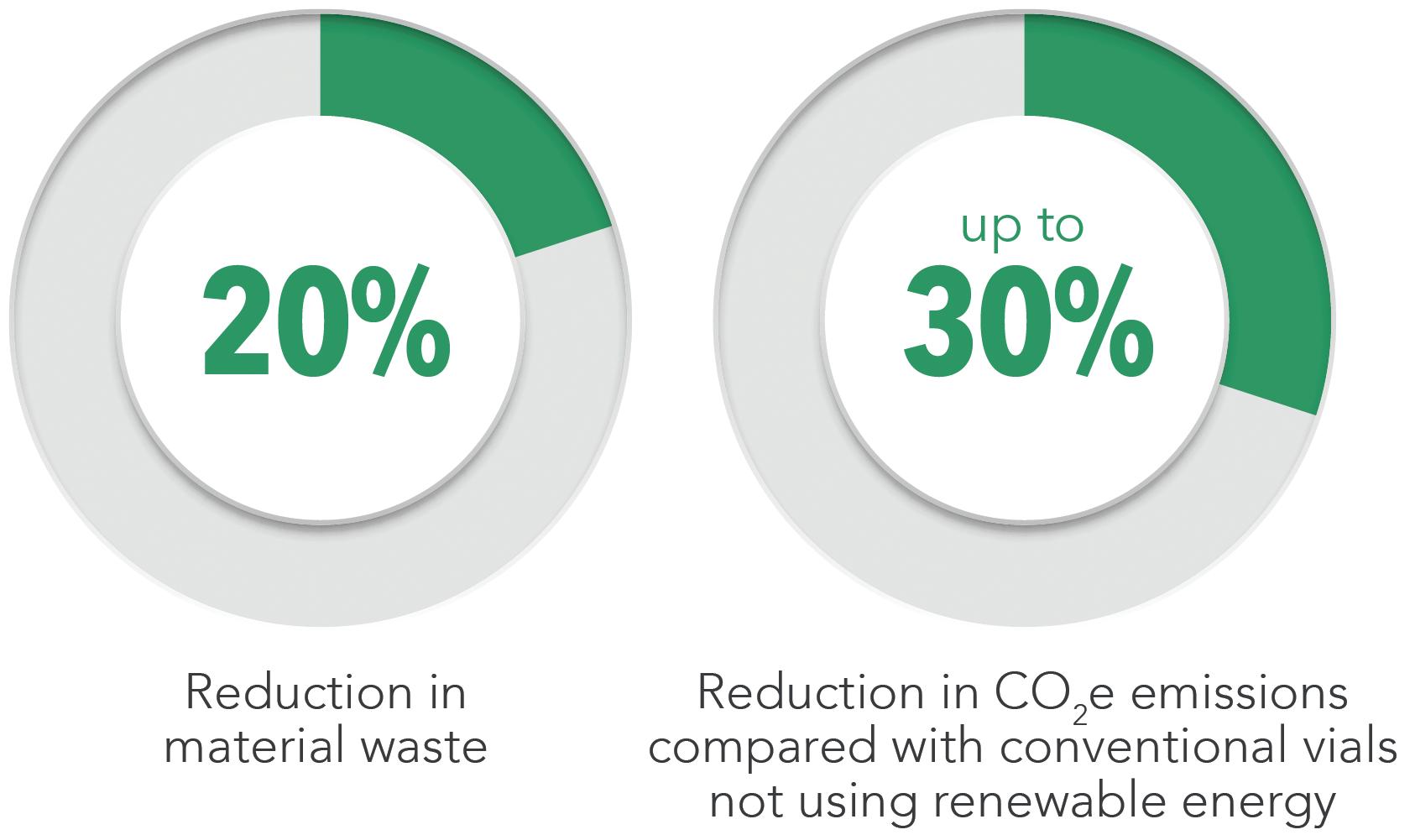
(Figure 3), Viridian vials present a drop in solution that fits effortlessly into pharmaceutical manufacturing that uses Type l borosilicate glass vials. The innovative coating preserves the integrity of the vial, and Viridian vials have demonstrated an up to 20–50% increase in fill-finish line throughput efficiency by enabling smoother vial flow and reducing the incidence of line stoppages due to equipment jams or vial breakages (Figure 4). These efficiency benefits ultimately decrease both glass waste and production emissions. These gains are complemented by a commitment to using renewable energy in the manufacturing supply chain for Viridian vials.
CONSIDERING THE FULL VIAL LIFECYCLE
To further validate the material and emissions reduction advantages, Corning sought to authenticate the sustainability impact of Viridian vials through a thirdparty-verified lifecycle assessment (LCA). In this case, a “cradle-to-gate” LCA that evaluated the environmental impacts from extraction of raw materials through to finished product vial manufacturing was conducted by Sphera (Chicago, IL, US), a leading provider of environmental performance and risk management software, data and consulting services. It should be noted that this LCA did not include the downstream impacts of distribution, use or disposal at the end of life, which are additional user-dependent opportunities for emissions savings.
The LCA confirmed that the more sustainable design of Viridian vials, coupled with Corning’s manufacturing efficiency,
offers significantly lower emissions for customers using these vials in their manufacturing processes compared with traditional vials. Beyond the factory walls, these improvements also offer drug manufacturers a pathway to reduce their Scope 3 emissions – those not directly produced by the company but that are associated with their operations and supply chain – which are typically challenging to quantify and manage.
Reducing the wall thickness and therefore the quantity of glass used in each Viridian vial by 20% compared with conventional vials reduces cradle-to-gate Scope 3 emissions by up to 30%. Using less glass per vial reduces the natural
resources consumed in their production. Furthermore, Corning estimates the reduction of pharmaceutical glass usage by 20% may prevent nearly 30,000 tons (>27 million kg) of glass from entering the waste stream each year (Figure 5). Less material per vial also reduces the vial’s weight, reducing CO2 equivalent (CO2e) emissions related to transport, enabling more efficient use of packaging and potentially reducing shipping costs.
A 2 mL Viridian vial weighs 3.5 g, compared with 4.4 g for a standard 2R ISO vial. Therefore, for every 10 million Viridian vials produced, up to 114,000 kg of CO2e emissions could be avoided –the amount produced by burning over 48,830 L of petrol – with the added environmental benefit of preventing 9 tons of glass from reaching landfill (Figure 5).
This material reduction, combined with using 100% renewable electricity in the manufacturing process, enables a modest reduction in customers’ overall Scope 3 emissions. Even when compared with conventional vials also made with 100% renewable electricity, the use of Viridian vials can reduce emissions by 15%.
SUPERIOR PERFORMANCE AND DURABILITY OF VIRIDIAN VIALS
Vial-to-vial and glass-to-metal friction, along with vial impact events, are leading sources of reduced efficiency and yield in fill-finish processes. In laboratory
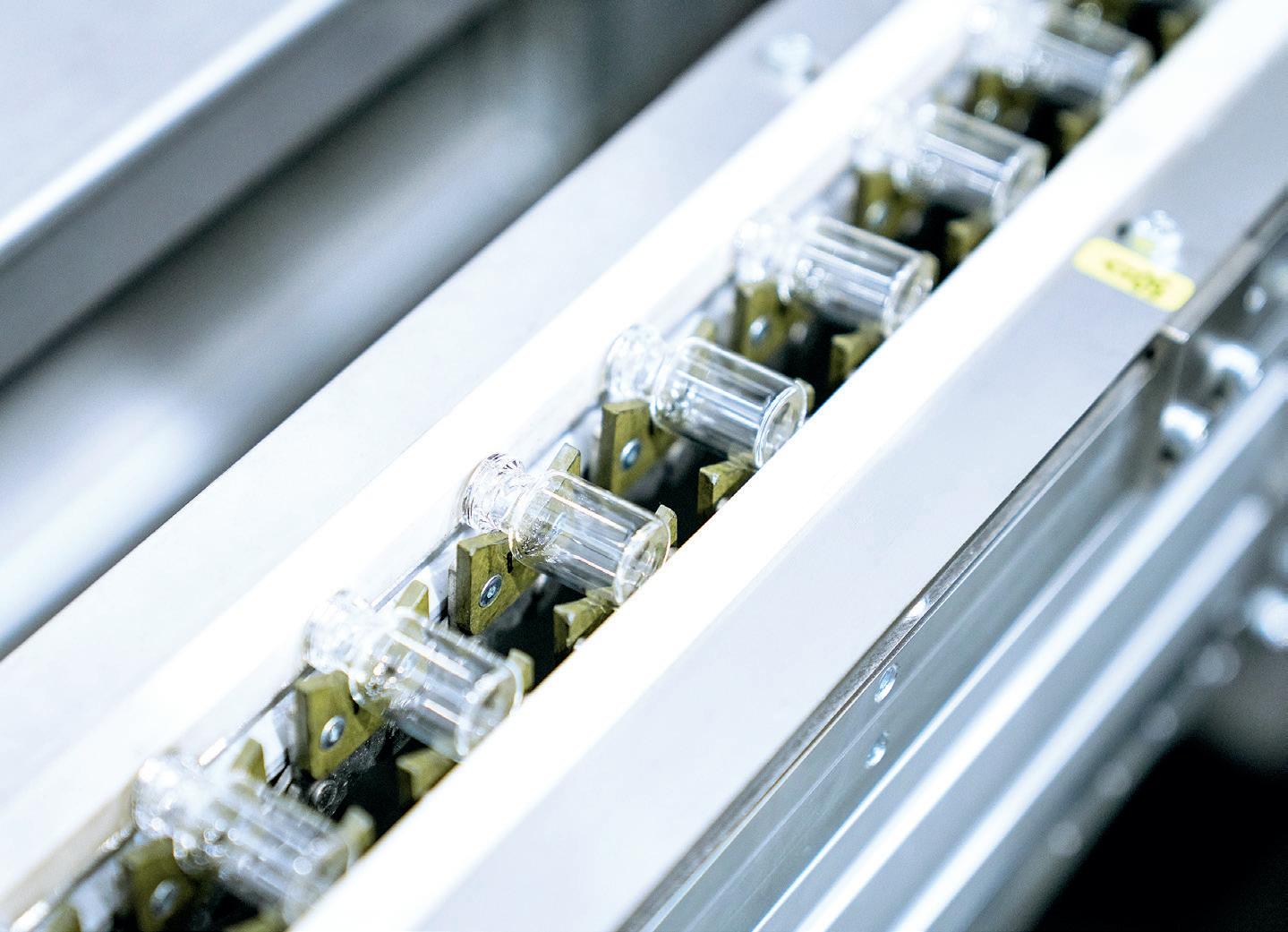

“Viridian vials support increased filling line speed and throughput, enhancing productivity by 20–50% compared with traditional glass vials.”
testing, Viridian vials have shown up to 30 times fewer glass-related defects compared with conventional borosilicate glass vials. Notably, Viridian vials support increased filling line speed and throughput, enhancing productivity by 20–50% compared with traditional glass vials. The proprietary external coating significantly reduces the creation of glass particulates and has demonstrated an up to 96% reduction in peak particle count on commercial filling lines, which could have a significant impact on reducing drug recalls due to particulate contamination.
In a trial with Optima Pharma (Schwäbisch Hall, Germany),2 a leading producer of fill-finish machinery, Viridian vials were put to the test. Optima assessed the rate of tip-overs, jams and breakage among standard 2R borosilicate vials and
2 mL custom Viridian vials, running 450 vials per minute through more than 120 cycles to simulate the processing of over 200,000 vials for each group. Viridian vials demonstrated comparable or superior resistance to breakage – no breakage was observed for the Viridian vials during washing, depyrogenation, accumulation, singulation or starwheel transfer. In addition, no functional issues were observed with washing or depyrogenation. Viridian vials also exhibited a sixfold reduction in tip-over rate compared with the conventional vials. These improvements were realised without any alterations to the existing machinery, underscoring the vials’ adaptability and superior performance.
ONGOING EXPLORATION OF EXTENDED BENEFITS OF VIRIDIAN VIALS
Since the 2023 launch of Viridian vials, early adopters in the pharmaceutical industry have already begun to see the advantages of switching to this more sustainable option and, alongside observed improvements in the filling process, further benefits continue to be uncovered. For example, the reduced wall thickness of Viridian vials can enhance heat transfer efficiency during lyophilisation, potentially
reducing cycle times and increasing throughput. This efficiency can not only reduce the cost per dose but also accelerate overall production rates. Furthermore, the reduced wall thickness allows for filling a larger volume within the same vial size, enabling a greater quantity of medication per vial, especially for multidose formulations. This could lead to fewer vials used overall, increasing sustainability, and potentially delivering cost savings and productivity gains. In commitment to environmental stewardship, Corning is actively investigating more sustainable options for the secondary packaging of Viridian vials.
MERGING HIGH PERFORMANCE WITH SUSTAINABLE DESIGN
Corning and West are committed to enacting real change, embodied by the companies’ dedication to climate initiatives, sustainable design and responsible stewardship, and are looking forward to forging partnerships within the pharmaceutical industry to expand the sustainability ethos across every link of the drug supply chain. This is where Viridian vials really deliver true value, with demonstrable benefits and careful consideration to maintaining specification
“Since the 2023 launch of Viridian vials, early adopters in the pharmaceutical industry have already begun to see the advantages of switching to this more sustainable option and, alongside observed improvements in the filling process, further benefits continue to be uncovered.”
and operational efficiency. However, this is just the start – the Corning–West collaboration will continue to innovate and further improve to support pharma’s sustainability goals.
Corning ®, Valor ®, and Viridian ® are trademarks of Corning Incorporated. West Pharmaceutical Services is the exclusive distributor of Corning® Viridian® Vials.
ABOUT THE COMPANIES
Corning Pharmaceutical Technologies has been a trusted supplier to the healthcare and pharmaceutical industries for over 100 years. Corning is a leader in laboratory tools and products, cell culture solutions, bioprocess vessels and specialty surfaces. In the last decade, Corning has expanded its capabilities to support more efficient, high-quality pharmaceutical glass tubing and vials for the pharmaceutical industry. Corning’s pharmaceutical glass vials are coated with an external low-friction coating that can help to maximise filling line productivity. The company’s supply chain is
powered by global manufacturing facilities producing Type I borosilicate glass tubing. Corning glass tubing supports every major pharmaceutical glass converter of vials, ampoules, prefilled syringes and cartridges, supporting a wide range of applications.
West Pharmaceutical Services is a provider of innovative, high-quality injectable solutions and services. As a partner to established and emerging drug developers, West helps to ensure the safe, effective containment and delivery of life-saving and life-enhancing medicines for patients.
With 10,000 team members across 50 sites worldwide, West helps to support customers by delivering approximately 47 billion components and devices each year.
REFERENCES
1. Chard L, “Pharma CEOs write open letter calling suppliers to commit to sustainability”. CPHI Online, Jul 2023.
2. Polasani S, “The Future of Sustainable Pharmaceutical Glass Packaging”. Company Web Page, Corning, accessed Sep 2024.
ABOUT THE AUTHOR
Jessica Buday is the Product Line Manager for Viridian® vials within Corning. As a member of the Corning business team, she oversees the product lifecycle and leads the commercial, technical and manufacturing plans to develop and deliver products to customers. Prior to joining Corning in 2021, she worked for over 13 years in various roles in the pharmaceutical industry, supporting the operations, technical, regulatory and quality aspects of sterile injectable manufacturing at Merck & Co Inc and Ferring Pharmaceuticals. Ms Buday holds a BS in Biochemical Engineering from the University of Georgia (GA, US).
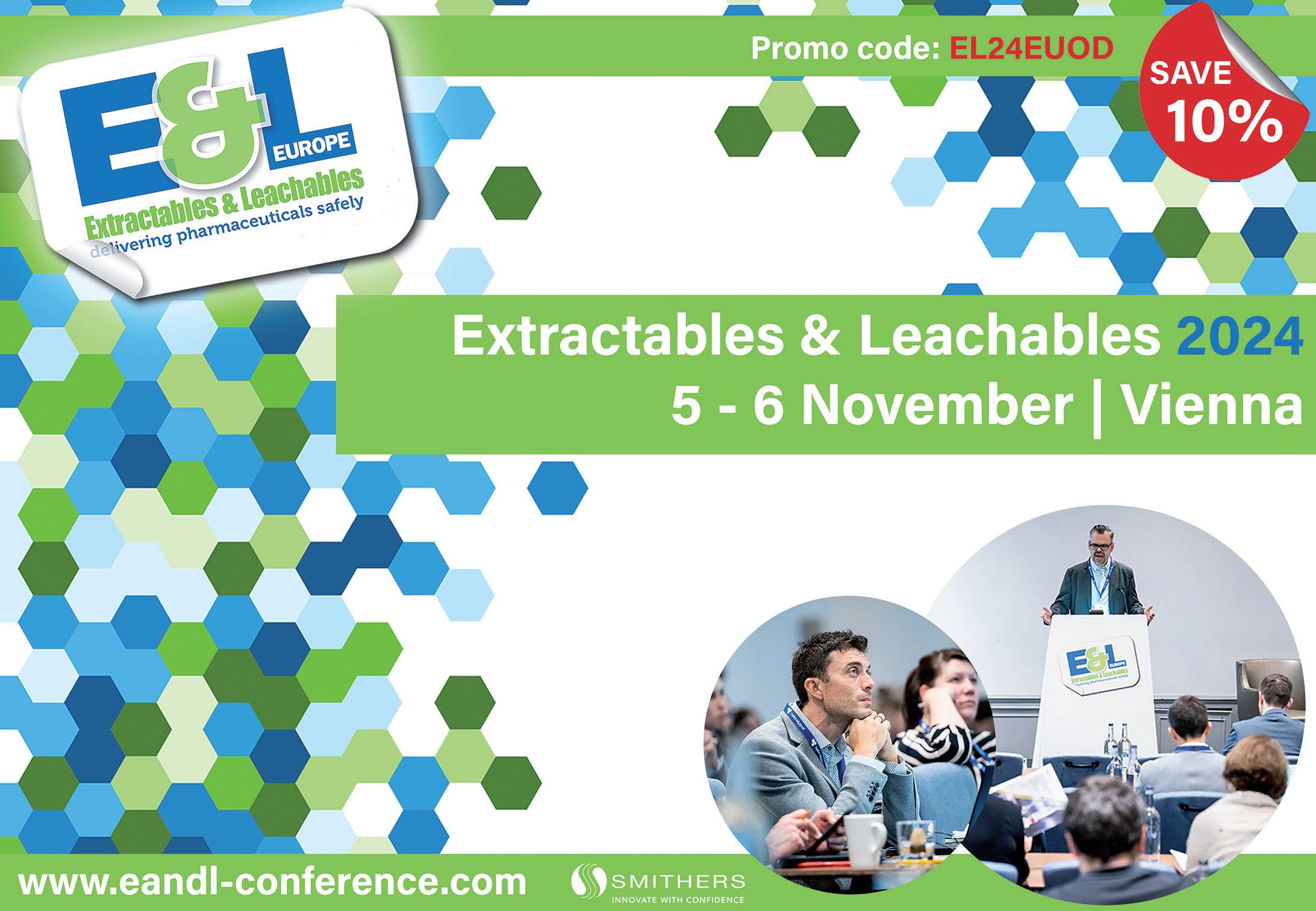
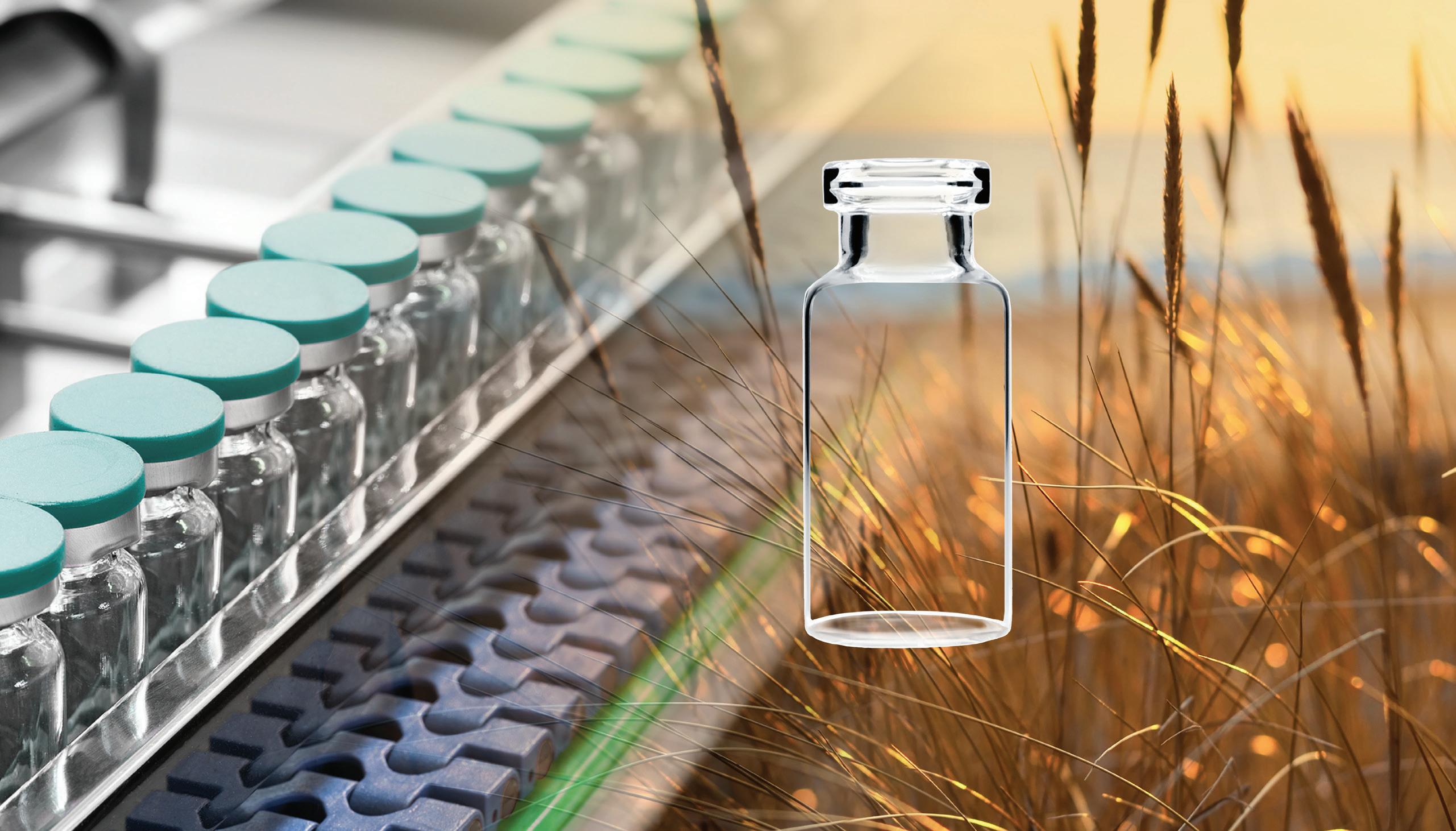

FROM VISION TO VICTORY: BUILDING A HANDS-ON ESG FRAMEWORK
In this article, Herman Rusch, Chief Executive Officer, and Steven van Voorst, QHSE Manager, both at IGS GeboJagema, discuss the steps that the company has taken to provide its environmental, social and governance efforts with a robust structure to build on and how doing so has made those efforts more effective and provided IGS GeboJagema with clear, meaningful and measurable targets to work towards.
The role of environmental, social and governance (ESG) factors has significantly transformed in recent years. Consumers, clients, employees, investors and other stakeholders now increasingly expect organisations to align their operations with greater societal interests (Figure 1). This development is reflected in regulatory developments as well, such as the upcoming EU Corporate Sustainability Reporting Directive (CSRD). In short, what was once considered a “nice to have” for companies –corporate social responsibility – has become a critical component of any corporate strategy.
For the high-precision mould maker IGS GeboJagema, ESG considerations are not new. Corporate social responsibility has always guided its decisions and actions, whether it concerned being a good employer, reducing carbon emissions or maintaining high standards of ethical behaviour. However, the standards and expectations surrounding ESG have matured significantly. Moreover, IGS GeboJagema has grown rapidly over the past decade, with its team more than doubling in size. Considering these factors, the need arose for a more structured, more comprehensive


Herman Rusch
Chief Executive Officer
T: +31 40 2647500
E: sales@igsgebojagema.nl

Steven van Voorst
QHSE Manager
T: +31 40 2647500
E: sales@igsgebojagema.nl
IGS GeboJagema
Esp 430
5633 AJ Eindhoven
The Netherlands
www.igsgebojagema.nl
approach. Rather than just addressing immediate and specific issues, this new approach examines IGS GeboJagema’s entire operation to identify the key areas the company should focus on to effectively address ESG topics in the future.
DEVELOPING A STRATEGIC ESG PLAN
The development of a comprehensive, strategic plan to address ESG principles was, of course, not an overnight process. The plan was developed over the course of six months. The first crucial step was to acknowledge the need for increased expertise in ESG matters. To address this, IGS GeboJagema partnered with the specialist consultancy 2BHonest (Hilversum, Netherlands) and hired a dedicated Quality, Health, Safety and Environment (QHSE) Manager.
To create a reference point for setting realistic yet ambitious goals, IGS GeboJagema assessed the wider industry’s level of development in ESG matters. It found that most of its customers were more advanced in their ESG practices, while IGS GeboJagema was ahead of its peers and suppliers. Next, the company conducted a double materiality analysis. This process involves assessing both the financial impact of ESG factors on the company and the company’s impact on environmental and social factors. By identifying and prioritising the ESG themes that were most relevant and impactful for IGS GeboJagema and its stakeholders, the analysis ensured a comprehensive understanding of the areas that required focus.
EU guidelines list 29 key performance indicators from which companies must select those most relevant to their sector and organisation. Based on the double materiality analysis, IGS GeboJagema identified seven key themes where it could make the biggest impact:
• Greenhouse gas (GHG) emissions related to business activities
• Circular economy practices
• Diversity, equity and inclusion
• Training and development of own employees
• Own working conditions
• Responsible business
• Product accessibility for end users.
These themes were divided into three pillars: environmental, social and governance (Figure 2).
PILLAR 1: ENVIRONMENTAL
GHG Emissions Related to Business Activities
The reduction of GHG emissions is a major goal for IGS GeboJagema, as it should be for any company. This effort began with creating a detailed picture of its carbon footprint across the three emission scopes. Scope 1 covers direct emissions from owned or controlled sources, Scope 2 includes indirect emissions from the generation of purchased energy and Scope 3 encompasses all other indirect emissions that occur in the value chain. This last scope includes categories such as purchased goods and services, capital goods, upstream transport and distribution, business travel,
employee commuting and the use of sold products. IGS determined that its GHG emissions were divided across the three scopes as follows:
• Scope 1: 0.27%
• Scope 2: 0.01%
• Scope 3: 99.72%.
The picture that emerged was one of a company that has already made considerable efforts in terms of sustainability. Over the past few years, IGS GeboJagema has targeted much of the low-hanging fruit to reduce emissions, implementing measures such as using state-of-the-art, energy-efficient equipment in its factory, installing LED lighting, adopting electric vehicles, purchasing green energy and using responsibly sourced resources and recycled steel of the highest possible quality. As a result of these targeted efforts, Scope 1 and 2 emissions had already been drastically reduced, with only a minimal contribution to the overall emissions, with Scope 1 accounting for 0.27% and Scope 2 for 0.009%.
Therefore, it was clear that Scope 3 emissions were where the most progress could be made (Figure 3). Within this scope, the category “use of sold products” stood out as the largest contributor, accounting for 82% of the total footprint. Therefore, it was determined that IGS GeboJagema could make the biggest impact by manufacturing innovative, energy-efficient injection moulds. The company has already made progress by developing “green moulds” that prioritise both quality and sustainability. These moulds use smart insulation and efficient equipment, such as thermolators, hot runners and robot systems, to enhance energy efficiency and reduce cycle time.
Moreover, the mould maker’s engineering team can make a huge impact on GHG emissions in the product design phase. For example, for a product in the ophthalmic market, the team managed to reduce wall thickness of a component by 15%. This resulted in a faster cycle time, allowing for greater output with the same energy consumption. It also reduced waste material, which further reduced the product’s GHG emissions. This is just one example of how smart engineering solutions can enhance sustainability, providing value in five areas: time, material, energy, waste and emissions.1 In light of this, IGS GeboJagema has set the following key performance indicators:
• By 2030, the company aims to reduce Scope 1 emissions by 20% compared with 2023 levels
• By 2030, the company aims to reduce Scope 2 emissions by 20% compared with 2023 levels
• By 2030, the company aims to reduce Scope 3 emissions by 40% compared with 2023 levels.
Circular Economy
IGS GeboJagema is committed to integrating circular economy practices into its operations, focusing on reducing waste and promoting the use of recycled materials. It has determined two goals in this area:
• By 2027, all packaging materials used are to be recycled and certified, meeting the Forest Stewardship Council’s packaging standards
• By 2030, 85% of the total weight of the steel used for critical components is to come from recycled material –the company already uses recycled steel and aims to increase this percentage by sourcing the highest quality steel from Uddeholm (Hagfors, Sweden), which consists of 85–95% recycled materials.
Additionally, encouraging clients to use recycled plastic seems like a logical step for an injection mould maker. However, due to the strict regulations within the medical sector, widespread adoption of this practice is not expected in the short term. Another hurdle is the current use of different types of resin for various device components, such as polypropylene (PP) for caps, polybutylene terephthalate (PBT) for housings, and acrylonitrile butadiene styrene (ABS) or polyoxymethylene
“IGS GeboJagema aims to be an attractive employer by fostering a diverse and inclusive workforce and a work culture that promotes professional growth and employee wellbeing.”
(POM) for technical parts. Design houses and original equipment manufacturers are working towards standardising these materials to make devices easier to recycle.
Despite these obstacles, IGS GeboJagema expects that market demands and regulations will eventually lead to the use of recycled material in the medical field as well. The company is proactively developing expertise and knowledge with which to advise its customers on this matter and is taking steps to be ready to implement these sustainable practices when the time is right.
PILLAR 2: SOCIAL
IGS GeboJagema aims to be an attractive employer by fostering a diverse and inclusive workforce and a work culture that promotes professional growth and employee wellbeing. This objective encompasses three key themes, for each of which IGS GeboJagema has set a measurable goal:
• Diversity, equity and inclusion: IGS GeboJagema strives for a gender composition that reflects technical education graduates in the Netherlands, aiming for at least 15% female representation.
• Training and development of employees: IGS GeboJagema has established a concrete budget per year per employee for training and education. The goal is for at least 70% of employees to use these training opportunities.
• Working conditions: Ensuring a supportive and motivating work environment is a priority. The company aims to achieve an employee satisfaction score of at least 70%, outperforming the annual employee engagement average of 70%.2
In addition to these goals, IGS GeboJagema is working towards certification as a “Great Place to Work”.
This certification is not seen as an end goal but as a natural outcome of the company’s efforts to implement effective actions and create a positive workplace. By focusing on these areas, IGS GeboJagema aims to cultivate an environment where everyone feels welcome and at home, allowing them to thrive and contribute to the company’s success.
Finally, IGS GeboJagema recognises its social obligation to keep its products accessible to people worldwide. The company achieves this by adhering to all governmental and EU regulations, ensuring compliance and maintaining the accessibility of its products to end users worldwide.
PILLAR 3: GOVERNANCE
Effective governance is essential for maintaining the integrity of any organisation. The right framework of policies and processes can ensure that an organisation operates in a transparent, ethical and accountable manner, while fostering trust among stakeholders, mitigating risks and ensuring compliance with legal and regulatory requirements. It is the best way to address the key theme “responsible business”.
For regulatory requirements, IGS GeboJagema works with an external consultancy to map out all applicable laws and regulations, confirming that the company is fully compliant. This partnership also ensures that the organisation stays updated on any changes in regulations. In addition, IGS GeboJagema aspires to maintain the highest ethical standards, for which it has set the following key performance indicator: zero cases of corruption and bribery per year.
IGS GeboJagema has also updated its code of conduct for both internal and external operations. These policies clearly communicate the company’s expectations of itself and its suppliers. Detailed information about the external code of conduct can be found on the company’s website.
IMPLEMENTING THE STRATEGY
IGS GeboJagema believes in a practical, hands-on approach to implementing its ESG strategy that embeds it into the fabric of the organisation. This means that ESG initiatives are not just top-down directives but are supported and carried out by employees at all levels as part of their day-to-day tasks.
“IGS GeboJagema does not view ESG as obligations to comply with, but as the cornerstone of a lasting, sustainable future for the company and its employees.”
To achieve this, IGS GeboJagema has established several working groups, each dedicated to one of the three ESG pillars. These groups comprise members from across the organisation, such as human resources (HR), works council members, management and other employees, ensuring diverse input and broad engagement, as well as relevant expertise, in every group. Each group has a team lead with a relevant function in the organisation. The QHSE manager leads Environmental, the HR manager heads Social and the Chief Financial Officer is team lead for the Governance group.
IGS GeboJagema believes this grassroots engagement is crucial for the successful implementation and sustainability of its ESG strategy, making it a living part of the organisational culture and ensuring continuous progress. Through this approach, the company aims to improve its performance on the EcoVadis sustainability assessment every year to reach the EcoVadis Gold status, which
is awarded to the top 5% of companies assessed. This commitment reinforces IGS GeboJagema’s leadership position as the mould maker sets a benchmark for sustainability in the industry.
THE POWER OF STRUCTURE
A large number of initiatives related to ESG were already in place within IGS GeboJagema, but the absence of a structured approach limited their effectiveness. By developing a comprehensive and strategic ESG framework, the company can now operate more effectively and consistently to ensure that ESG principles are systematically integrated into all aspects of the organisation’s activities and become part of the fabric of the company culture.
IGS GeboJagema does not view ESG as obligations to comply with but as the cornerstone of a lasting, sustainable future for the company and its employees. Its systematic and structured approach to
ABOUT THE AUTHORS
ESG ensures that IGS GeboJagema meets the evolving demands of customers in this area, reaffirming the company’s position as a front-runner in the market. It is the key to making regular, measurable progress to achieve sustainability goals and create a lasting positive impact on society and the environment.
ABOUT THE COMPANY
IGS GeboJagema is a high-precision mould maker that designs, manufactures, validates and maintains moulds for products where extreme precision is vital, from glasses and contact lenses to asthma inhalers, insulin pens and blood diagnostic devices. IGS GeboJagema specialises in collaborating with medical original equipment manufacturers early in the product lifecycle, allowing its exceptional engineering team to develop innovative moulding solutions.
REFERENCES
1. Jansen A, Cisliek R, “Green Thinking: How to Become a More Sustainable Organisation”. ONdrugDelivery, Issue 153 (Oct/Nov 2023), pp 22–25.
2. “State of the Global Workplace”. Report, Gallup, 2024.
Herman Rusch is the Chief Executive Officer at IGS GeboJagema. He brings a strong background in mechanical engineering to the role, including an MSc, as well as experience in the high-tech semiconductor sector, with previous roles in operations, business management and general management. Before joining IGS GeboJagema in 2023, Mr Rusch’s career spanned several large international original equipment manufacture companies, including Philips, BESI, ASML and VDL.
Steven van Voorst serves as the QHSE Manager at IGS GeboJagema, equipped with a robust technical background in mechanical engineering (BSc), industrial design engineering (BSc) and technical physics (BSc). Before joining IGS GeboJagema in early 2024, Mr van Voorst gained extensive experience in the high-tech semiconductor industry through roles at organisations such as TNO and ASML, specialising in production quality, supplier quality collaboration and strategic technical development.








In-depth
Focus
Comprehensive
Examination of primary and secondary packaging in line with global regulatory standards
Interactive sessions with industry experts on current trends and challenges in extractables and leachables.

Dennis Jenke, Triad Scientific Solutions
Ping Wang, Janssen
Prabhakar Reddy, USP
Sherry Parker, SParker Consulting
Ray Colton, Nelson Labs
High Precision Moulds Because healthcare requires the highest standards
THE WORLD’S LEADING MOULD MANUFACTURER 300+ MOULDS MANUFACTURED ANNUALLY

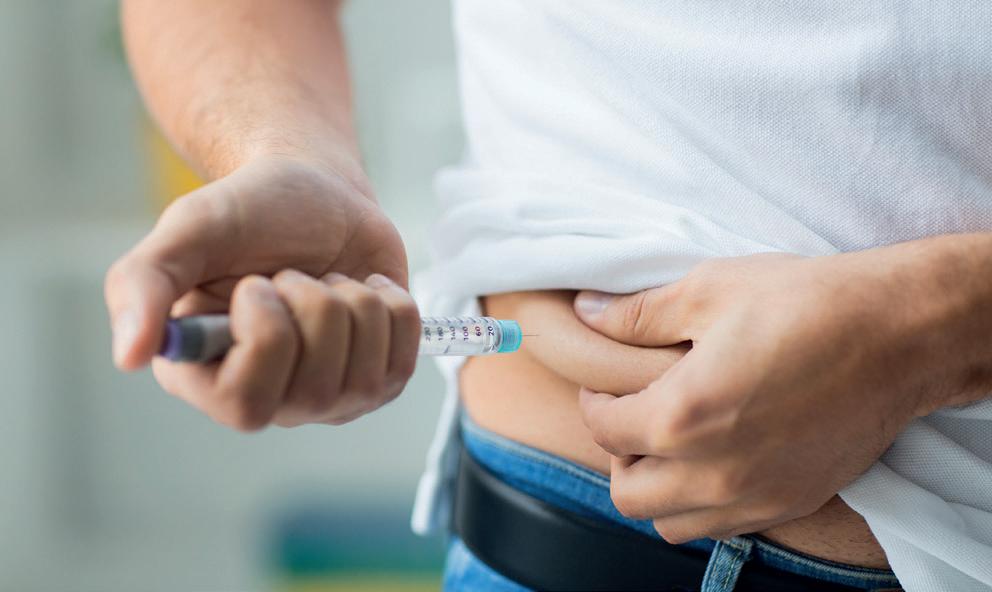

When it comes to people’s health, nothing but the very highest standards will do. That’s what drives IGS GeboJagema to push the envelope every single day. Based in the heart of the most prominent technology hub of Europe, and with a state-of-theart plant in the USA, we have assembled a team of world-class engineers. Through their ambition and creativity, we develop cutting-edge and highly reliable moulding solutions for the healthcare market.
IGS GeboJagema combines unrivalled technical expertise, smart innovations and rigorous testing with the latest technology and the highest specifications of materials. By working closely with medical OEMs early in the product life cycle, we allow our clients to take full advantage of our engineering power. It’s how we deliver unique, innovative solutions that give our clients an edge over their competitors.
From Precision to Perfection
Join us in creating the future of injection moulding and discover how our team can make your production easier, faster and less expensive.
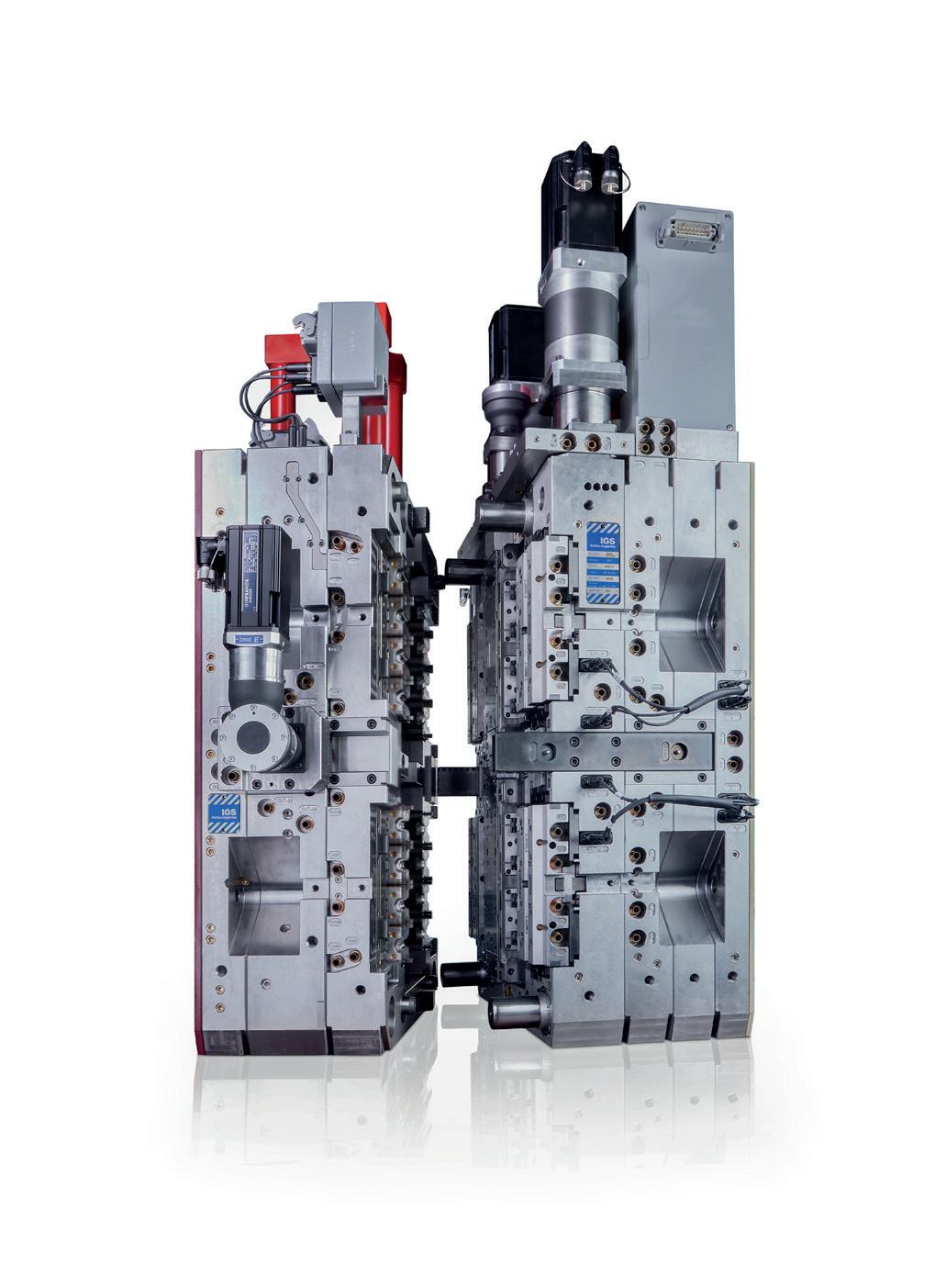

INTERVIEW
The world is finding it harder to breathe – an increasing global incidence of respiratory diseases, such as asthma and chronic obstructive pulmonary disease, is driving demand for therapies. Simultaneously, greenhouse gas emissions continue to rise, so the pharma industry must consider how to produce much-needed nasally delivered and orally inhaled medicines whilst minimising environmental impact. In this interview, Louise Righton, Head of Strategic Marketing, and Benedicta Bakpa, Head of ESG, both at Bespak, discuss the many different aspects involved in driving sustainability in inhaled drug delivery – and the next steps going forward.

LOUISE RIGHTON, HEAD OF STRATEGIC MARKETING
Louise Righton is Head of Strategic Marketing at Bespak. She has worked in the pressurised metered dose inhaler (pMDI) industry for more than 20 years in global marketing, commercial and government affairs roles. A graduate in Industrial Management, a Chartered Marketer and a Fellow of the Chartered Institute of Marketing, Ms Righton also holds a master’s degree in Strategic Marketing Leadership. She is a board member at the International Pharmaceutical Aerosol Consortium and is committed to leading the change to sustainable pMDIs.

BENEDICTA BAKPA, HEAD OF ESG
Benedicta Bakpa is the Head of ESG at Bespak, bringing with her 15 years of experience in environmental management and sustainability across multiple sectors. She specialises in net zero carbon initiatives, helping organisations achieve their carbon reduction goals and contribute to a more sustainable future. Ms Bakpa has successfully led the implementation of numerous environmental and social value initiatives for companies in Africa, the Middle East and the UK. She holds a master’s degree in Applied Environmental Economics from Imperial College London (UK) and a certificate in Business and Climate Change from the University of Cambridge (UK). Ms Bakpa is a Chartered Environmentalist and a full member of the Institute of Environmental Management and Assessment.
QThe prevalence of respiratory diseases around the world is growing. How does this impact the inhaled drug development industry?
LR To answer this question, we first need to understand why the prevalence is increasing. There are several contributing factors. Firstly, airborne pollution plays a role in the incidence of respiratory diseases such as asthma, and greenhouse gases have a major impact on air quality. The ageing population is another key driver because, as people age, they are more likely to suffer from chronic obstructive pulmonary disease (COPD). Finally, access to healthcare is thankfully continuing to increase, meaning more patients are able to be accurately diagnosed.
BB To add to that, global health initiatives have helped increase the awareness of respiratory diseases and their impact, focusing on early diagnosis and access to treatment so that more people can manage their symptoms themselves. Consequently, there is an increased demand for these drugs, particularly in developing countries. These countries are an important emerging market, as chronic respiratory diseases can represent a significant challenge to public health due to their frequency and severity, and the economic impacts of managing them.
LR As a result of these factors, there is increasing demand for pressurised metered dose inhalers (pMDIs), as this format of inhaled therapy is accepted by patients and cost effective for providers. Sustainability is also intrinsically linked with patient outcomes; for example, taking action to reduce pollution will help to mitigate one of the factors contributing to respiratory diseases. Therefore, with the number of pMDIs consumed every year growing, we have to find ways to increase
“There
is increasing demand for pressurised metered dose inhalers, as this format of inhaled therapy is accepted by patients and cost effective for providers.”
sustainability and minimise the plastics and propellant gases released into the environment. Beyond this, ultimately, the patient with the lowest carbon footprint is a well-controlled patient. Access to early diagnosis, the right medication and clear guidance on how to use it effectively can all help to manage symptoms and prevent patients ending up in hospital, where their carbon footprint significantly increases.
QWhat measures is the inhaled drug development industry implementing to achieve improved sustainability?
LRThe big change we’re focusing on as an industry is the phasing out of the hydrofluoroalkane (HFA) propellants that are currently used in pMDIs, due to their a high global warming potential (GWP). The industry is currently in the process of transitioning to two greener alternatives: HFA-152a and HFO-1234ze. This change will require significant investment in knowledge and infrastructure, as well as effective collaboration to ensure a smooth transition. Overall, we need to maintain the supply of life-saving pMDIs for patients, whilst also making sure that they comply with new regulations and reduce environmental impact.
We must also consider the materials and processes involved in manufacturing inhaled drug products. In particular, many of these devices are made from moulded plastic, so reducing this is a key step. Looking further ahead, we can work towards more reusable and reloadable devices, as well as incorporating more sustainably sourced materials. In addition, we can optimise the manufacturing processes themselves. By updating facilities and operations with the environment in mind, we can build sustainability throughout the entir supply chain.
BB
Whilst it is key to think about the whole supply chain, cradle-tograve product lifecycle assessments (LCAs) can be a useful way of understanding the environmental impact of a product and areas for improvement. When considering every step, from the raw materials through to the product’s disposal, we can identify areas where the environmental impact can be reduced.
Another approach that will be important is embedding socio-economic factors into overall business practices. This includes corporate social responsibility (CSR)
“Companies developing a new medicine must consider the delivery system both in terms of what is most effective and appropriate for the target patient population and also from an LCA perspective.”
initiatives that raise environmental awareness with employees, as well as patients and wider communities. Similarly, holistically integrating sustainability into corporate strategy and decision-making processes will help ensure long-term environmental responsibility.
QHow does the growing focus on sustainability impact companies developing inhaled drugs?
BBDrug developers will be exposed to new market and regulatory pressures along with increasing patient expectations – everyone is looking for the eco-friendly option. But there is also a need to strike a balance between implementing sustainable practices and working towards operational efficiency, all whilst maintaining a profit. Similarly, managing stakeholder interests can be a challenge. Drug developers must consider the interests of investors, patients, prescribers, employees and regulators, understanding how each stakeholder can support sustainable initiatives. As a result of these pressures, organisational changes may be needed to transition to sustainable practices, which may require a lot of effort and resources to implement.
LRIn addition, from a drugdevice standpoint, companies developing a new medicine must consider the delivery system both in terms of what is most effective and appropriate for the target patient population and also from an LCA perspective. Companies updating an existing medicine might look to add features that impact upon sustainability metrics, such as dose counters or reloadable devices, or might consider their use of materials, such as the packaging. Whilst priorities will differ, ultimately,
all developers will be looking to differentiate their product, and so will be driven to continually broaden their thinking and explore how we can keep doing better.
Q What role do contract development and manufacturing organisations (CDMOs) play in supporting sustainability in the industry?
LR I think CDMOs have a huge part to play in the transition, such as proactively investing in development and full commercial supply capabilities with both of the new greener propellant options to help as many companies transition as quickly as possible. For example, at Bespak, we have recently invested in expanding our capabilities with the installation of new high-speed filling lines for commercial manufacturing with low-GWP propellants, as well as clinical supply capabilities. This reflects the unique role that CDMOs play, providing flexible capacity both now and in the longer term, coupled with the know-how to support manufacturing with new materials. We bring proactivity, leadership and a willingness to invest in the future of the industry.
BB
The transition will draw on a range of capabilities that CDMOs can support the industry with, including experienced supply chain management. For example, a CDMO can help scale up production of lowGWP pMDIs and prepare customers for commercialisation. They are experienced in maintaining product quality and consistency, and also in managing the logistics associated with new propellants, such as sourcing, storage and handling, to minimise environmental impact.
LR There are also CDMOs that can help to speed up how companies navigate the shift by supporting them across multiple facets of their product transition. At Bespak, for example, we produce valves that are optimised, supply-assured and compatible with both new propellants, streamlining the product design process. Following significant investments, Bespak can now provide development services up to market approval for all pMDI formulations and propellants, supported by capacity for commercial supply.
BB
CDMOs are also well positioned to lead best practice in terms of energy efficiency, waste reduction, water management and sustainable sourcing. The key steps here include integrating renewable energy sources, such as solar panels, into their operations to further reduce greenhouse gas emissions; aiming for lean manufacturing to reduce waste and minimise resource consumption; and implementing water conservation techniques to reduce water use in the manufacturing process. Enhancing sustainable sourcing of raw and packaging materials and optimising logistics can also reduce emissions from transportation and ensure sustainable practices throughout the supply chain.
LR Another approach CDMOs can incorporate is manufacturing control technology, such as via the digitisation of manufacturing facilities. These technologies enable the continual monitoring of production to provide very early warning of any defects starting to occur. At Bespak, this is something we are currently implementing at our King’s Lynn (UK) site. The approach helps to increase the quality and consistency of our output –supporting delivery of customer orders on time and in full – and, in doing so, reduce waste and minimise environmental impact.
LR Lastly, CDMOs that operate across R&D, finished product manufacturing and device design and industrialisation must have a comprehensive view of the regulatory landscape. They can, therefore, support and advise customers on multiple such aspects, from regional and global environmental legislation right through to the intricacies of pharmaceutical and medical device regulation.
BB Understanding the intricacies of the global regulatory requirements related to environmental sustainability is really important. CDMOs can also consider compliance management to ensure that all manufacturing processes comply with current regulations and are prepared for any future changes. They can also help customers to navigate complex regulatory landscapes.
Q What factors should drug developers take into consideration when working with a CDMO to develop a new medicine in line with evolving environmental regulations?
“Drug developers will need to think about clinical outcomes for patients and environmental outcomes in tandem, and how they can optimise both.”
BB
As we have discussed, there are many challenges in working towards sustainability, including the changing regulatory landscape and the significant cost of compliance, including how resource intensive it can be to update manufacturing processes and equipment. Collaboration and communication with stakeholders, such as regulators, investors and customers, are therefore vital in aligning interests on sustainability goals, prioritising continuous improvement and driving best practices.
LR I agree that collaboration is absolutely critical. Developers should look for a CDMO that is driven to bring its customers the best, most efficient, most robust service to help them with everything they need. Bespak puts a lot of emphasis on building the right partnerships – for example, with clinical trials experts and specialists in specific technology development. We also have sustainability at the core of our mission and vision, so we are well positioned to help give drug developers the competitive edge to succeed in this evolving landscape.
QHow do you think sustainability pressures will shape the industry in the short and long term?
BB Looking to the next three to five years, I think we can expect increased standards of regulatory compliance –for example, enhanced reporting processes and transparency. We will likely also see a shift towards more sustainable packaging, reducing the plastic footprint whilst maintaining product integrity. I also anticipate more CDMOs being fully reliant on renewable energy. Longer term, I think we will see an increased focus on education, with investment in thought leadership on sustainability for patients
and providers through both patient education and awareness, and patient and provider engagement. By taking these steps, CDMOs can not only reduce their environmental impact but also position themselves as leaders in the movement towards a more sustainable healthcare system.
LR I agree that there will be increased emphasis on keeping the patient at the centre. Drug developers will need to think about clinical outcomes for patients and environmental outcomes in tandem, and how they can optimise both. I think we can also expect a more holistic approach to reducing the environmental footprint – for example, with biologic treatments that patients can administer at home rather than having to travel to a clinic. I am also hopeful that we will see increased funding for research into long-term sustainable commercial practices and further collaborations beyond the pharmaceutical sector.
ABOUT THE COMPANY
Bespak is a global CDMO focused on inhaled and nasal drug delivery devices and drug-device combination products. The company develops and manufactures finished pharmaceutical products, as well as being a leading global supplier of drug delivery devices and componentry to the pharmaceutical industry.

Louise Righton Head of Strategic Marketing
Benedicta Bakpa Head of ESG
Bespak Ltd London Road Holmes Chapel Crewe
Cheshire CW4 8BE
United Kingdom
T: +44 1477 357112
E: enquiries@bespak.com
www.bespak.com




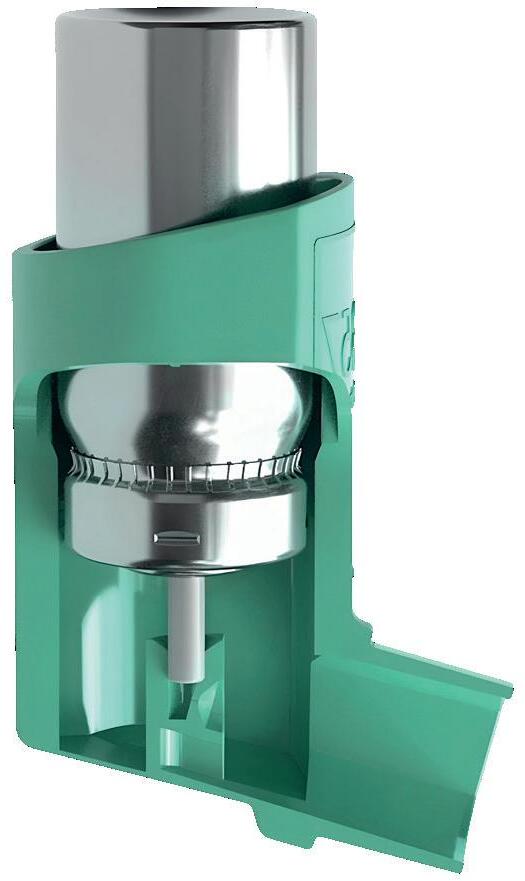

Conference Showcase
DIVE INTO THE HEART OF PHARMA
”CELEBRATING 35 YEARS OF CPHI”
EVENT OVERVIEW
CPHI Milan 2024 returns with an expanded array of opportunities for networking, innovation and collaboration in the pharmaceutical industry. This three-day exhibition promises to immerse attendees in every facet of pharmaceuticals, with a strong emphasis on supply chain resilience and sustainable practices.
CPHI is an unmissable opportunity to connect with leading professionals from the industry and forge enduring partnerships.
OCTOBER 8TH–10TH, 2024
Join colleagues from across the industry at CPHI Milan 2024, the premier global event for pharmaceutical professionals, from October 8–10, 2024, at Fiera Milano in Milan, Italy (Box 1). The central theme of this year’s event is the “CPHI Celebration” to mark the conference’s 35th anniversary and to recognise the massive role pharma plays in improving the world and advancing health.
Celebrating 35 years of excellence, this event promises unparalleled opportunities for networking, innovation and professional growth. With over 62,000 attendees and 2,500 exhibitors, the event features insightful seminars, cutting-edge exhibitions and new awards, including “Woman of the Year” and “Future Leader”. CPHI brings suppliers, innovators, industry leaders and distributors together in a dynamic setting promising unmatched opportunities for networking and partnership generation.
In addition to the huge exhibition, networking opportunities and educational seminars and panels, in the spirit of celebration and in keeping with “la dolce vita” of Milan, CPHI’s host city, the conference will host a number of evening events.

This year is a particularly significant year for CPHI, as the conference is celebrating its 35th anniversary. It will be the largest event in its history, and the organisers are continuing to innovate with new awards and improved bioproduction zones and content. There has never been a better time to attend CPHI, especially as the conference returns to Lombardy – a region that is home to one of the most vibrant hubs for pharmaceutical manufacturing and API production. The organisers look forward to welcoming the global pharmaceutical supply chain, its partners and drug innovators to Italy. The partnerships made during the conference will empower future drug development and ultimately improve patients’ access to treatments.
With over 2,500 exhibitors and attendance of over 62,000 industry professionals, CPHI Milan provides unparalleled opportunities for networking and partnership building, which are essential for enhancing supply chain resilience in an increasingly dynamic market. Attendees can expect a dynamic agenda designed to inspire collaboration and facilitate discussions on the latest trends, innovations and sustainable practices shaping the industry today.
WHAT’S NEW AT CPHI MILAN 2024?
The 35 Pharma and Science Champions CPHI has grown dramatically over the last three and half decades. Yet, alongside this, pharma’s advancement has been far more impressive, with contributions to global innovation and human health growing exponentially. The US FDA is now regularly approving over 50 new medicines each year, reaching an all-time high of 73 in 2023 – including the first ever CRISPR–Cas9-edited therapy and a disease-modifying Alzheimer’s drug.
“With over 2,500 exhibitors and attendance of over 62,000 industry professionals, CPHI Milan provides unparalleled opportunities for networking and partnership building.”
To celebrate these prestigious innovations and to acknowledge that what is possible today is built on the shoulders of the giants of yesterday, the conference will run a prominent campaign throughout the show-floor to showcase 35 champions of pharma and science – from historical greats such as Edward Jenner (smallpox vaccine), Alexander Fleming (penicillin) and Paul Ehrlich (the founding father of immunotherapy) to more recent champions including Robert Langer (nanomedicine), Carl June (CAR Ts) and Özlem Türeci (mRNA vaccines).
There will be a number of on-site programmes related to this celebration, so please come together to celebrate everything the industry has achieved – and look forward to everything it can achieve tomorrow. It is only through deeper partnerships and collaborations that many of these recent advances have been possible.
Supply Chain Resilience
Stay ahead with insights into new technologies and strategies essential for diversifying and stabilising the pharmaceutical supply chain. CPHI Milan 2024 will showcase the latest innovations
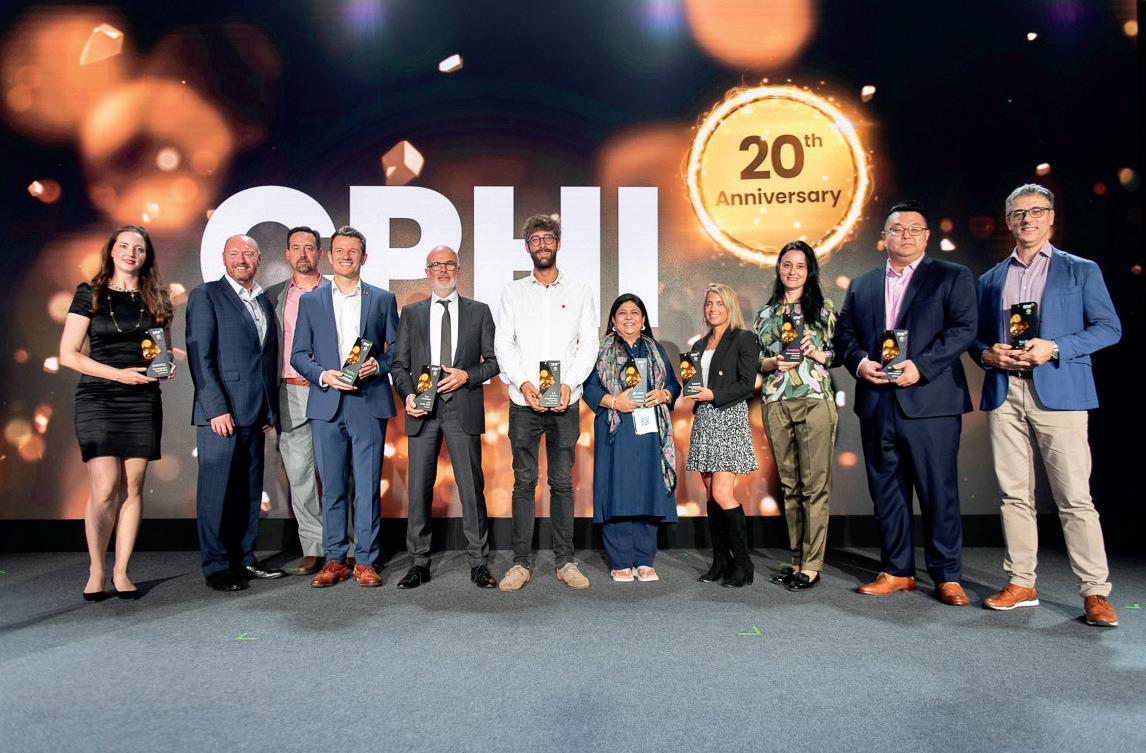
and practical solutions for navigating the complexities of supply in the pharmaceutical landscape. The event will focus on strategies for mitigating risks, ensuring continuity and optimising operations within the supply chain, all of which are crucial in today’s volatile market environment.
Awards Ceremony at CPHI 2024
On October 8, 2024, at Alcatraz Milano, the CPHI Awards Night will commence with a glamorous drinks reception, celebrating excellence and innovation in the pharmaceutical industry across 14 categories. Among the highlights is the new “Woman of the Year” award, honouring women leaders who inspire colleagues, champion diversity and inclusion, and advocate for progress within the industry. Nominees are evaluated on their leadership, collaboration and ability to create opportunities for women while challenging the status quo.
BOX 1: LA “FARMA” VITA
Fiera Milano, the venue itself, much like the wider city of Milan, places significant emphasis on ensuring that attendees have downtime amenities with a wider range of cafés, outside spaces and restaurants – so when attendees are not empowering pharma, they can embrace the spirit of Italy. CPHI will be hosting happy hours each day of the show and special networking drinks at the Start-Up Hub, as well as at the eagerly anticipated CPHI Celebration party.
The CPHI Celebration is an exclusive evening of top-level networking, drinks and canapés, set against a backdrop of innovation as the conference announces the 2024 CPHI Pharma Awards winners. The curated guest list of exhibitors and nominees brings together the brightest minds in the pharmaceutical community to make powerful connections in a relaxed environment.
“CPHI Milan 2024 will showcase the latest innovations and practical solutions for navigating the complexities of supply in the pharmaceutical landscape.”
Equally anticipated is the novel “Future Leader” award, recognising rising stars under 35 with at least five years of experience in pharma, biopharma or academic institutions. This award celebrates those who bring fresh perspectives, manage teams effectively and introduce innovative ideas, marking them as the future leaders set to shape the pharmaceutical industry with their dedication and vision.
Digital Platform
Enhance the CPHI Milan experience with the conference’s upgraded online platform, designed to facilitate year-round networking with industry leaders. Whether attendees are on-site or remote, they can maximise their engagement and stay connected beyond the exhibition floor. This robust digital infrastructure not only extends the reach of the event but also amplifies its impact on the global pharmaceutical community. Participants can engage with peers, speakers and exhibitors throughout the year, fostering continuous dialogue and collaboration.
BOX 2: SNAPSHOT OVERVIEW OF SOME KEY SESSIONS
• Keynote: Advancing Immunisation with Next-Gen mRNA Vaccines
– When: Tuesday, October 8, 2024, from 11:00 AM to 11:30 AM
– Where: Hall 3 – 3F97
– Speaker: Cesar Sanz Rodriguez, Vice President, Medical Affairs EMEAC at Moderna
– Insights: Delve into the future of vaccination technology as Moderna’s market experts unveil the potential of mRNA vaccines. Discover how these next-generation vaccines are reshaping disease prevention and explore the forefront of medical innovation.
• Navigating Regulatory Landscapes: Ensuring Quality and Compliance in Pharma Ingredients
– When: Tuesday, October 8, 2024, from 1:15 PM to 1:40 PM
– Where: Hall 22 – 22F50
– Speaker: Jyotsna Agnihotri, Head of QA and Regulatory Affairs at Flavine
– Insights: Gain a deep understanding of GMP principles in pharmaceutical ingredient manufacturing. Learn about auditing processes, including planning, execution, reporting and followup actions. This session is crucial for ensuring compliance and continuous improvement. It will also discuss comparative analysis of regulatory frameworks across key regions, focusing on differences, similarities, challenges and effective strategies.
KEY HIGHLIGHTS OF CPHI MILAN 2024
Unmatched Networking Opportunities
At CPHI Milan 2024, attendees can anticipate connecting with over 62,000 pharmaceutical professionals and 2,500 exhibitors, including industry giants such as Lonza, Samsung Biologics, Thermo Fisher and Pfizer CentreOne. This year is expected to see the largest attendance yet, creating unprecedented networking possibilities. The event will provide a unique platform to forge new partnerships, strengthen existing relationships and explore potential business opportunities in a dynamic setting.
Conference Programme Highlights
The CPHI Milan 2024 conference programme has been meticulously crafted to inspire and inform attendees. Industry thought leaders will lead insightful sessions, addressing critical topics such as regulatory trends, technological innovations and sustainable practices. From visionary keynote addresses in pharmaceutical R&D to interactive panel discussions on emerging therapies and market dynamics, CPHI event’s agenda promises a wealth of learning opportunities (Box 2). Attendees will be able
• Panel Discussion: Why the Middle East Can Be the New Frontier for Next-Generation Medicine
– When: Tuesday, October 8, 2024, from 4:15 PM to 5:00 PM
Where: Hall 22 – 22F50
Insights: Join a panel of experts as they delve into the emerging opportunities in the Middle East. Discover why it could be the next frontier for groundbreaking medical advancements.
• Panel Discussion: Excipient Excellence – The Power of Excipient Grade Selection
– When: Wednesday, October 9, 2024, from 11:35 AM to 12:45 PM
– Where: Hall 22 – 22F50
Insights: In this session, the panellists will delve into the critical role of excipients in pharmaceutical formulations. Discover how excipient quality significantly influences drug performance and stability. Learn about the nuances between different excipient grades and their impact on formulation outcomes. Additionally, explore strategies for ensuring consistent access to high-quality excipients and selecting the optimal grade for targeted drug delivery.
to learn and gain insights from over 150 expert speakers across five content tracks within three days, ensuring a comprehensive exploration of the latest advancements and trends in the pharmaceutical industry. For the live agenda that is updated all the way up to the event, please visit CPHI Milan 2024’s website
Sustainable Initiatives
At this year’s CPHI, the Sustainability Centre in Hall 6 will host conversations about sustainability challenges and measures in the pharma industry, while the Fieraccessible initiative will ensure better accessibility for attendees with disabilities. Additionally, the CPHI Celebration menu will be 50% vegetarian, reflecting the organisers’ commitment to sustainable choices.
FINAL THOUGHTS
CPHI Milan 2024 is more than an exhibition – it is a catalyst for change and advancement within the pharmaceutical industry. With a renewed focus on supply chain resilience, attendees will gain actionable insights into navigating challenges, optimising operations and ensuring continuity in supply. By embracing these trends and focusing on strategic
“Attendees will be able to learn and gain insights from over 150 expert speakers across five content tracks within three days.”
imperatives, the pharmaceutical industry can achieve greater efficiency, resilience and success in the years to come.
The future of pharmaceutical outsourcing is increasingly shaped by the need for strategic, integrated and collaborative partnerships. CPHI Milan 2024 is the perfect venue to explore these opportunities and stay at the forefront of industry trends. Don’t miss this chance to be part of the conversation and drive the future of pharmaceuticals forward.
Join Us
Attendees are invited to join CPHI in person at Fiera Milano, Italy, and immerse themselves in a dynamic environment where ideas flourish and partnerships thrive. Visit CPHI Milan 2024’s website to learn more and register today!
2024/25 EDITORIAL CALENDAR









